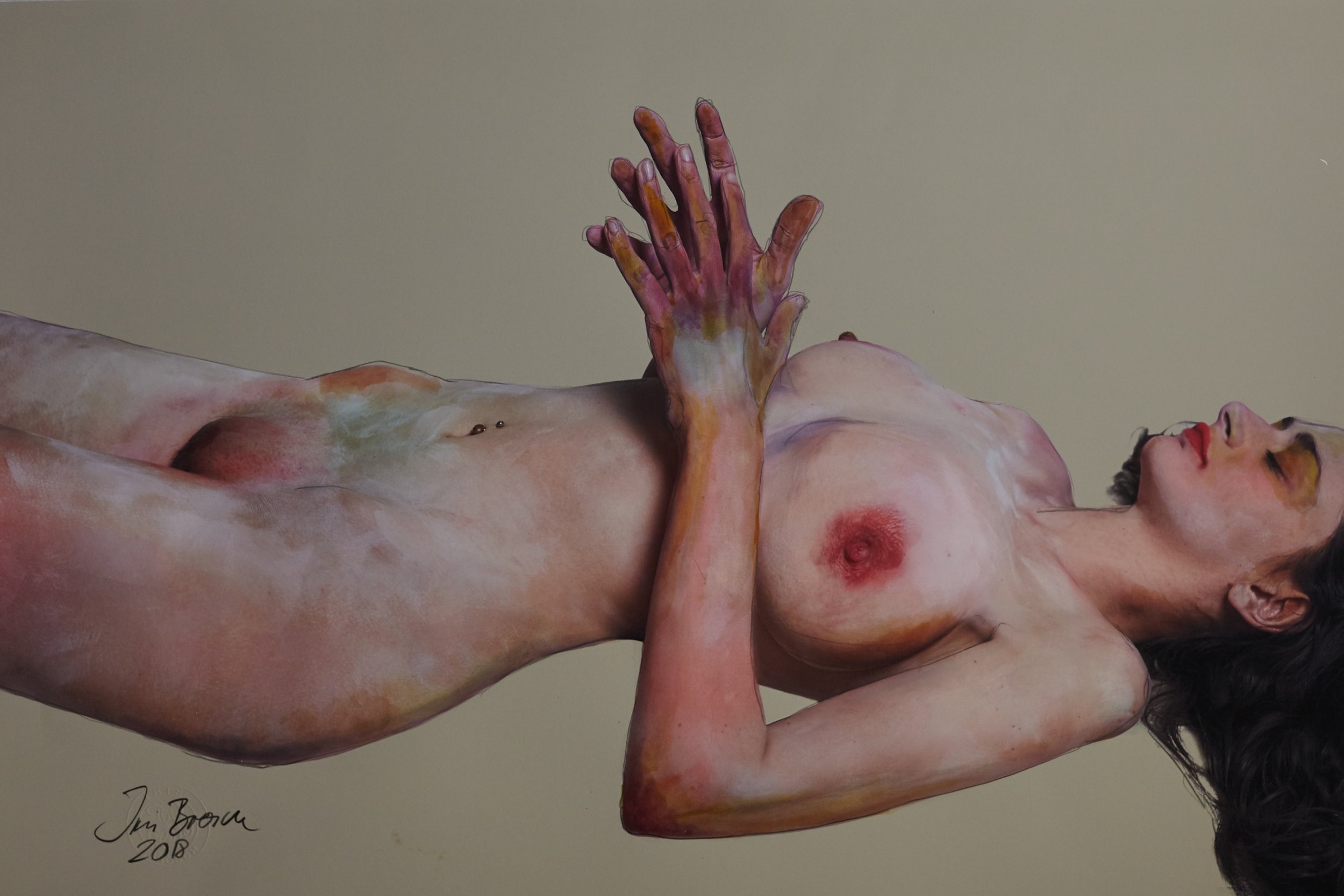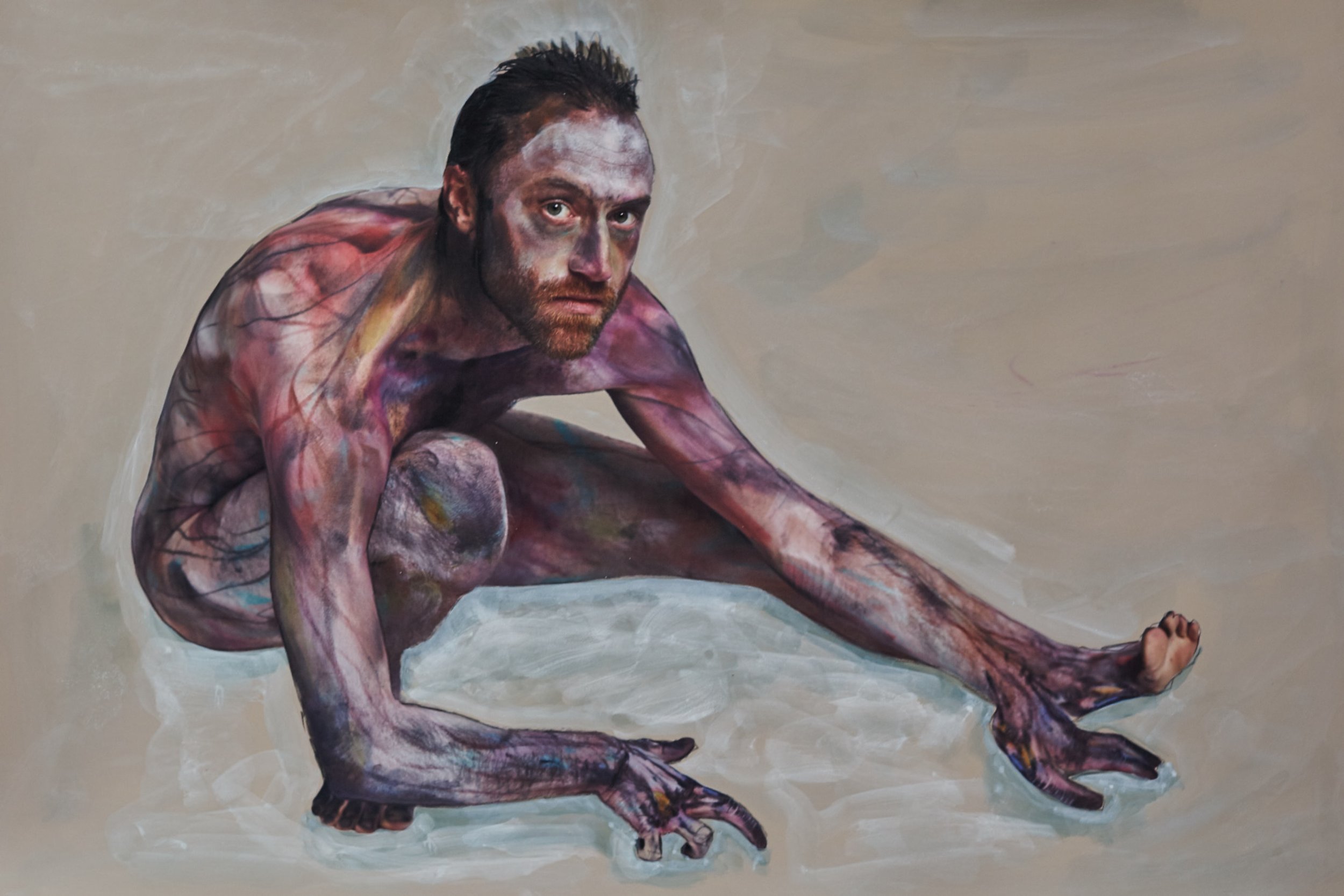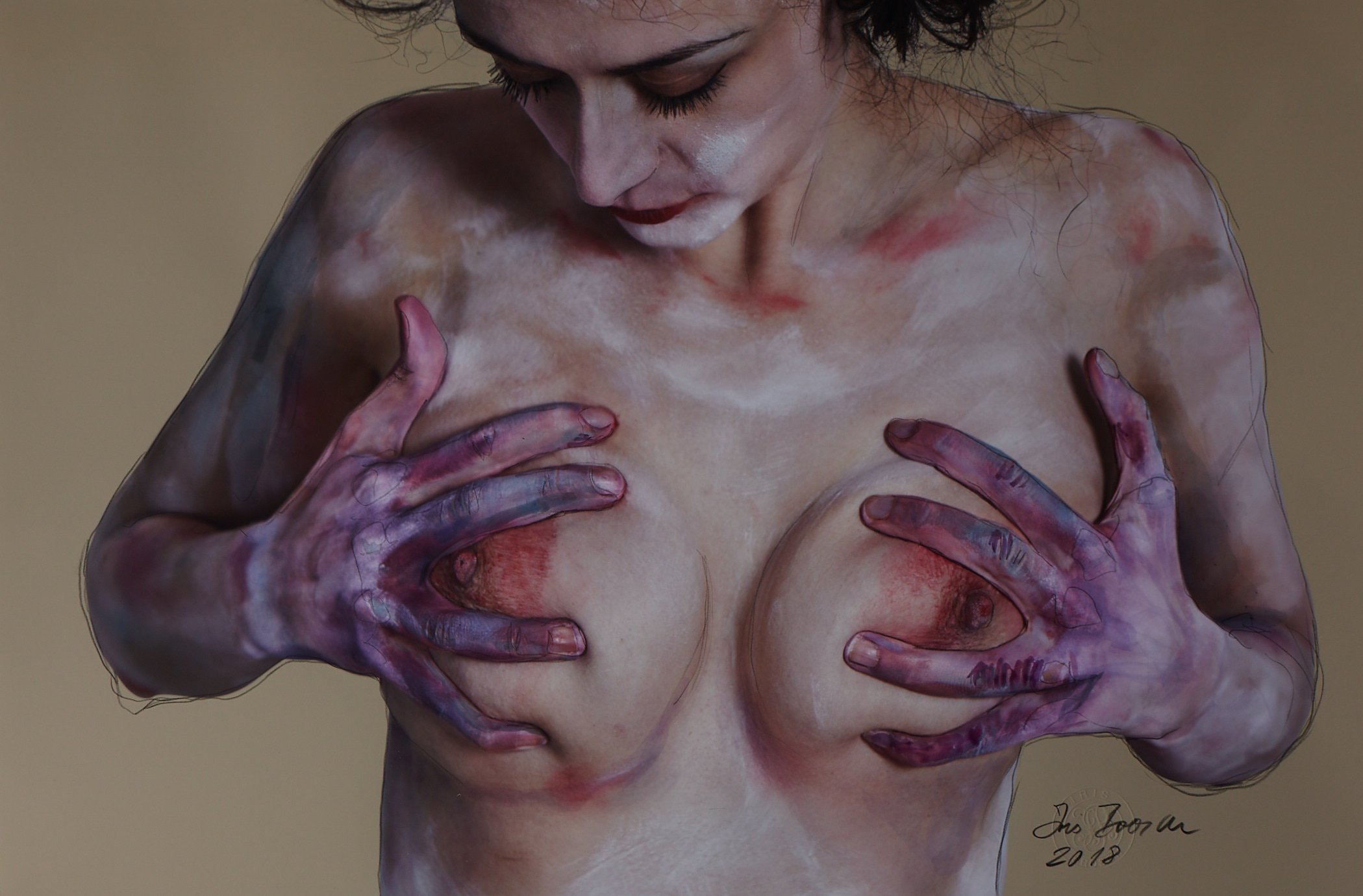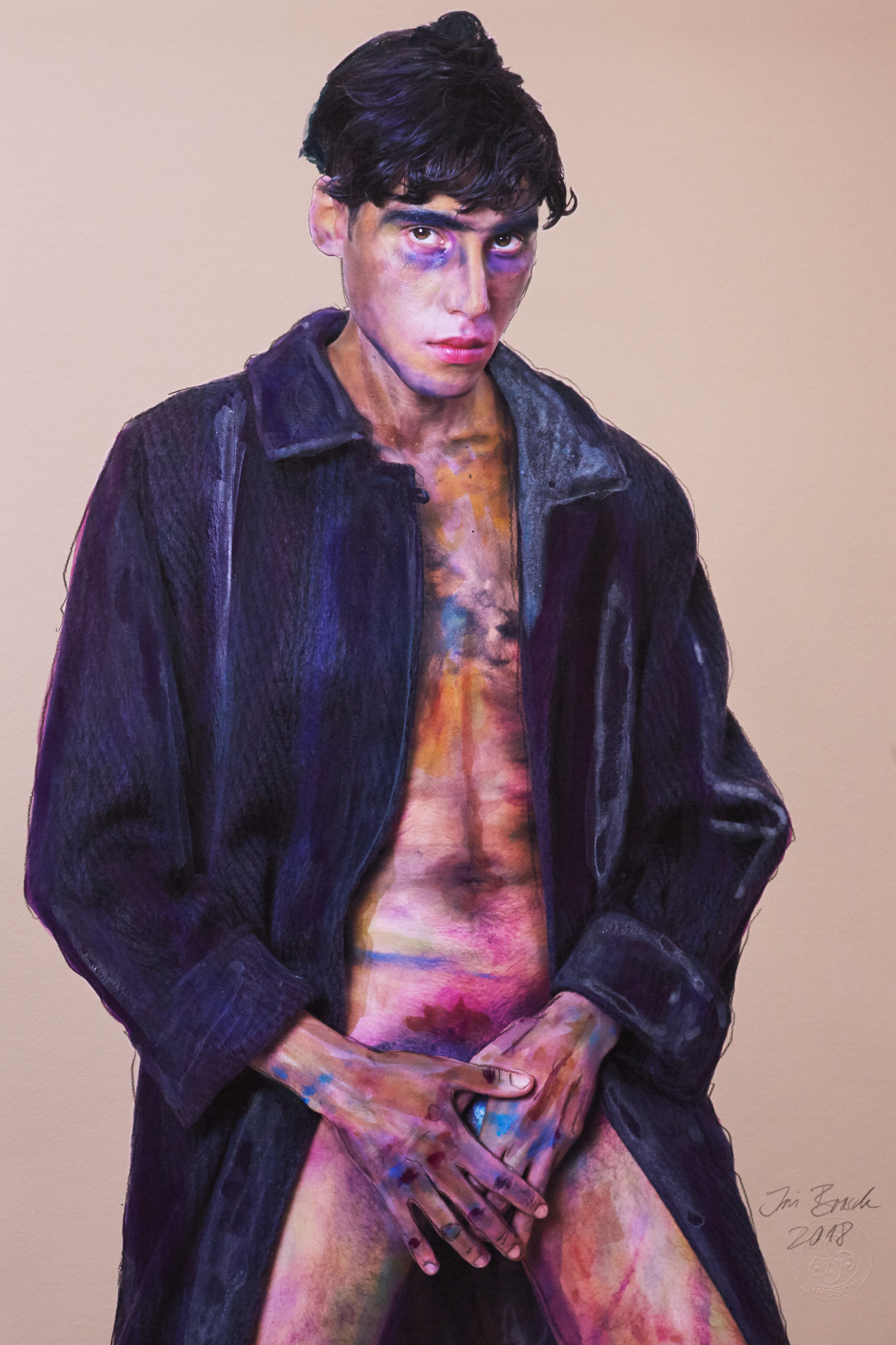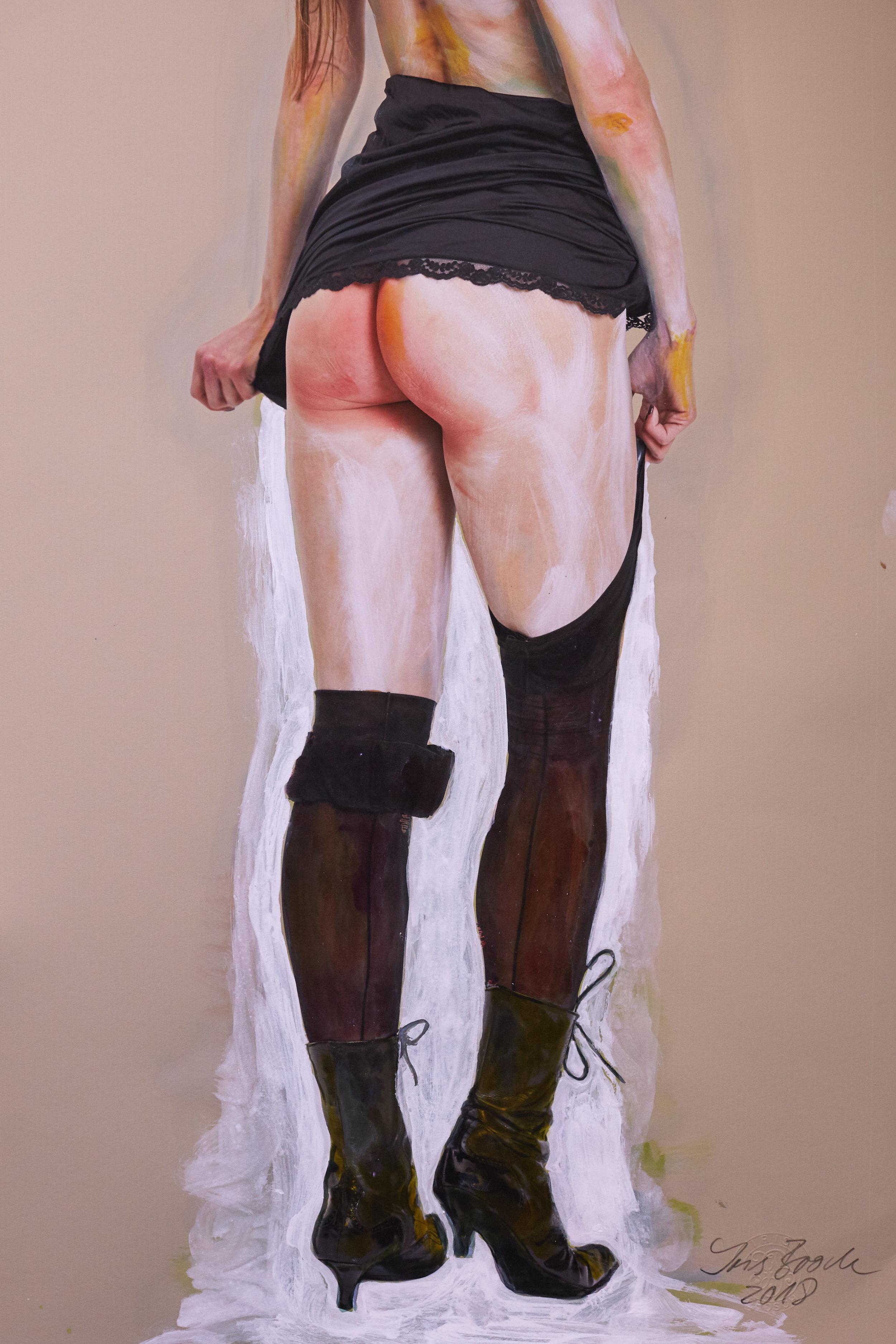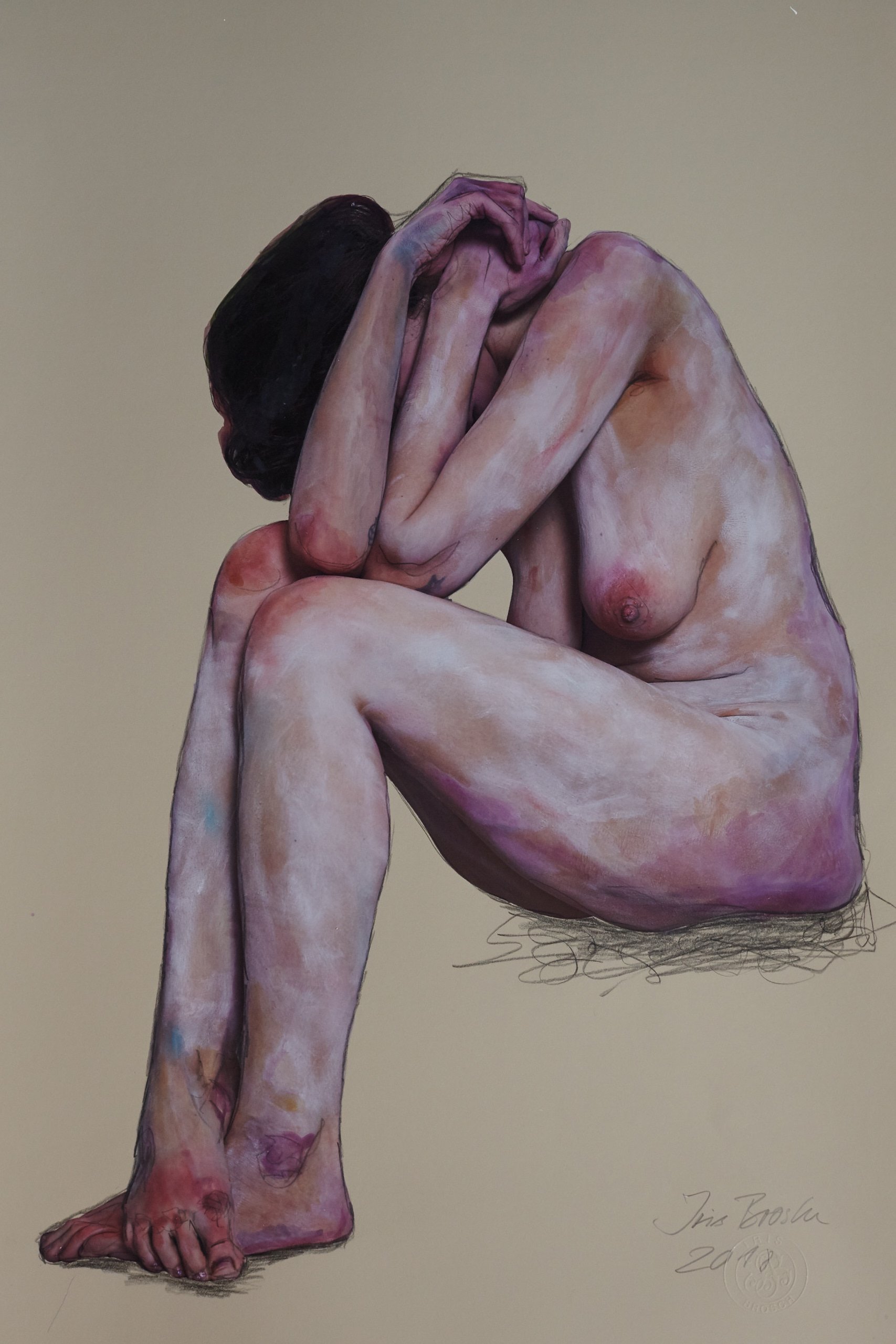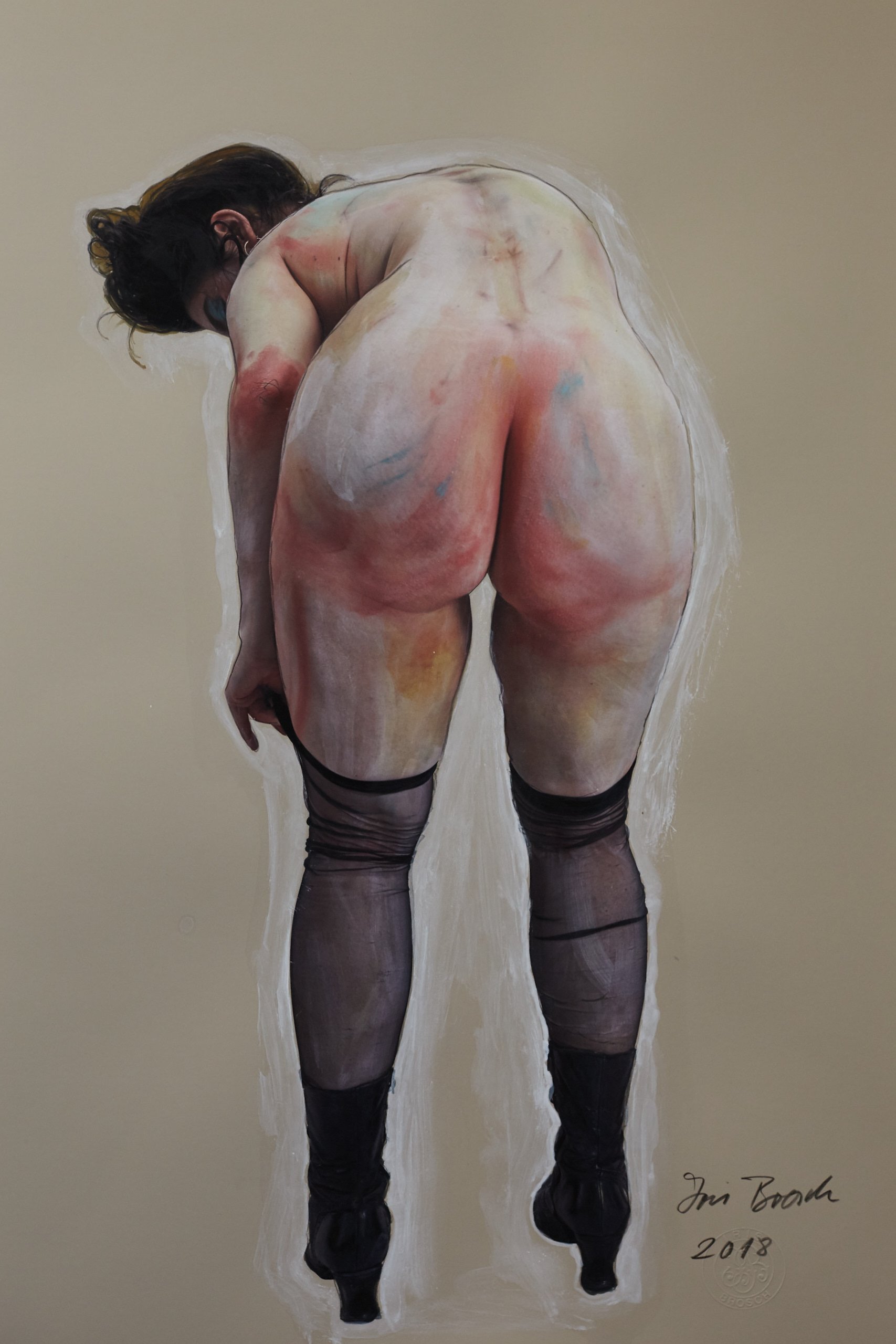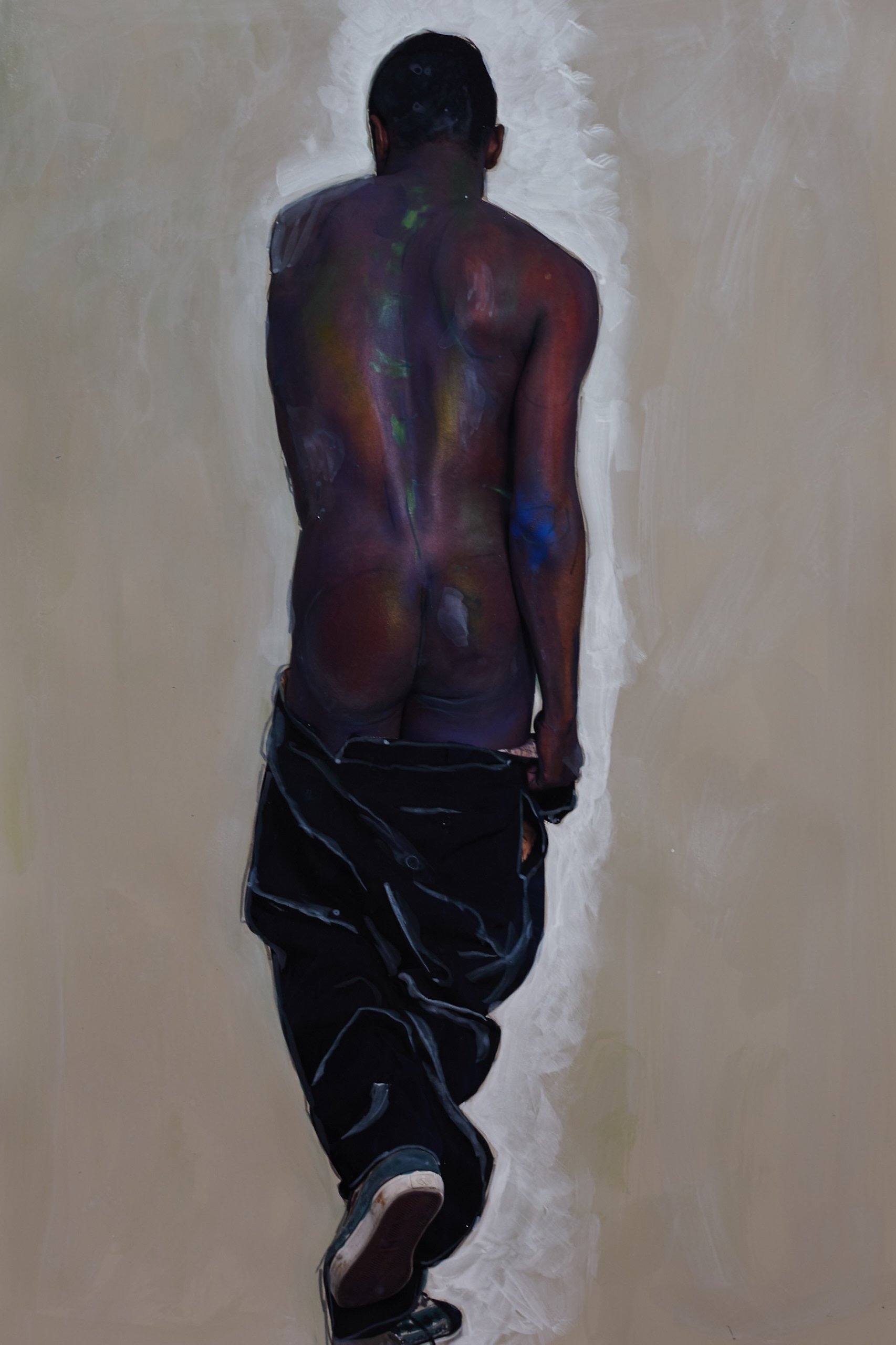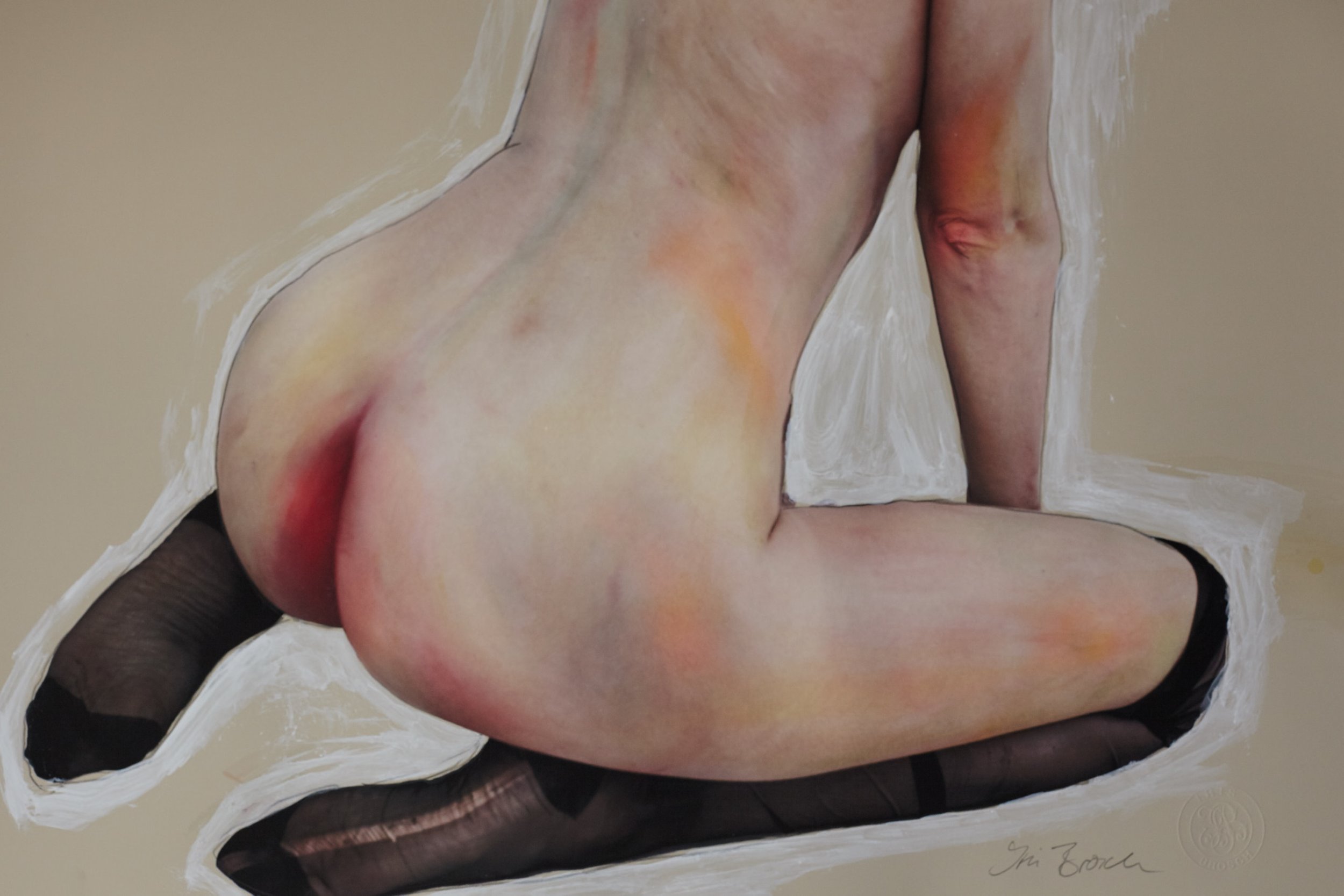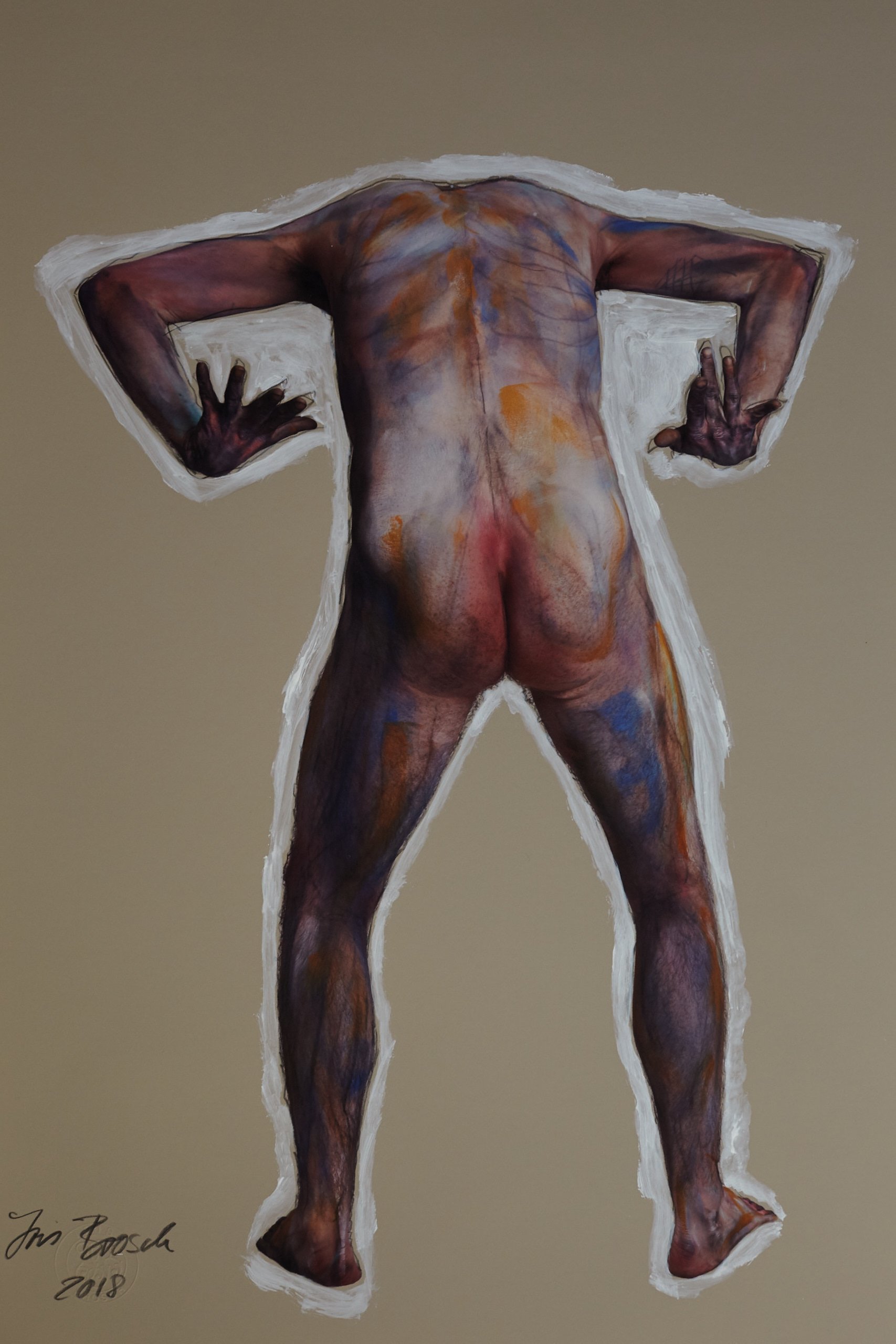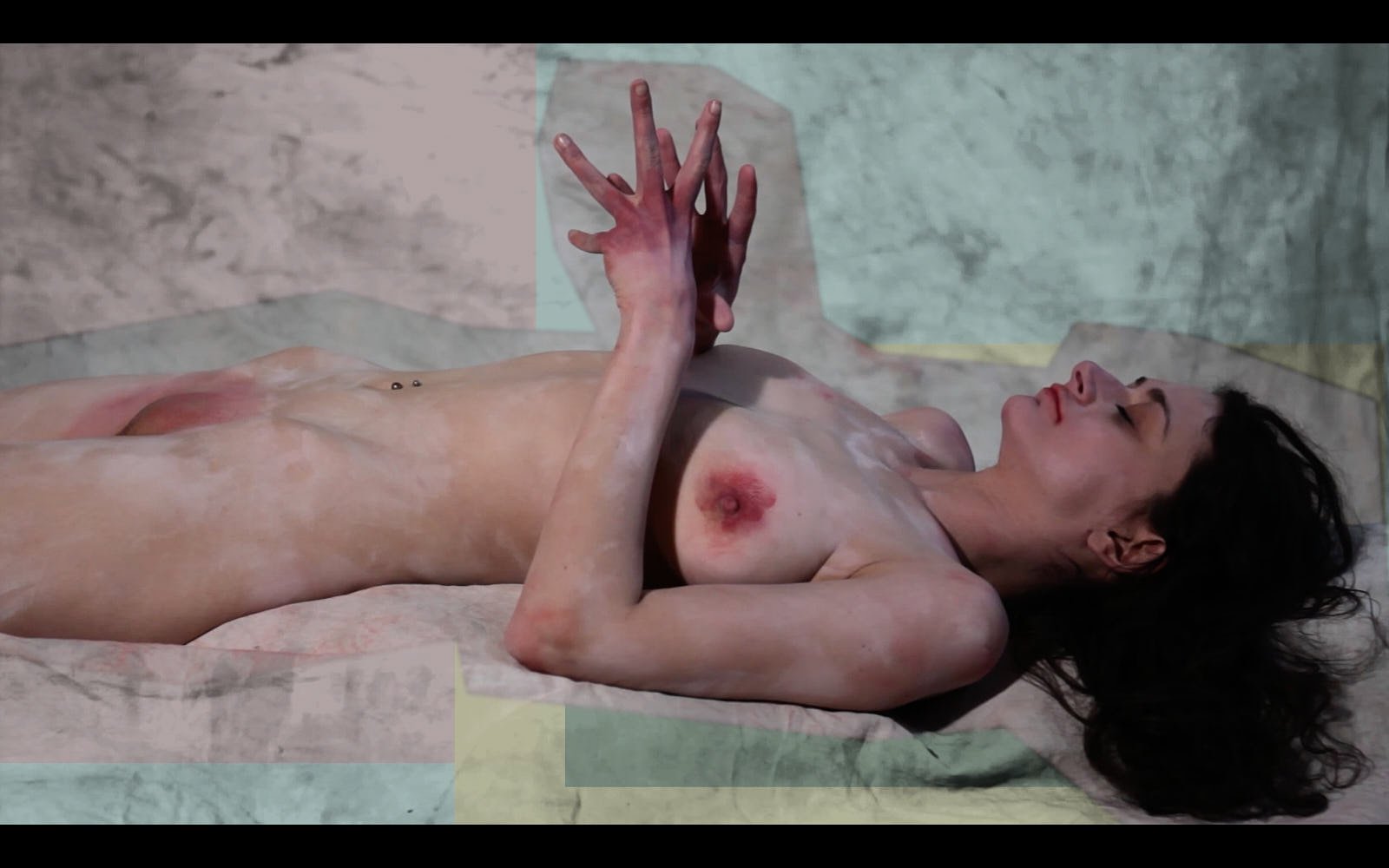
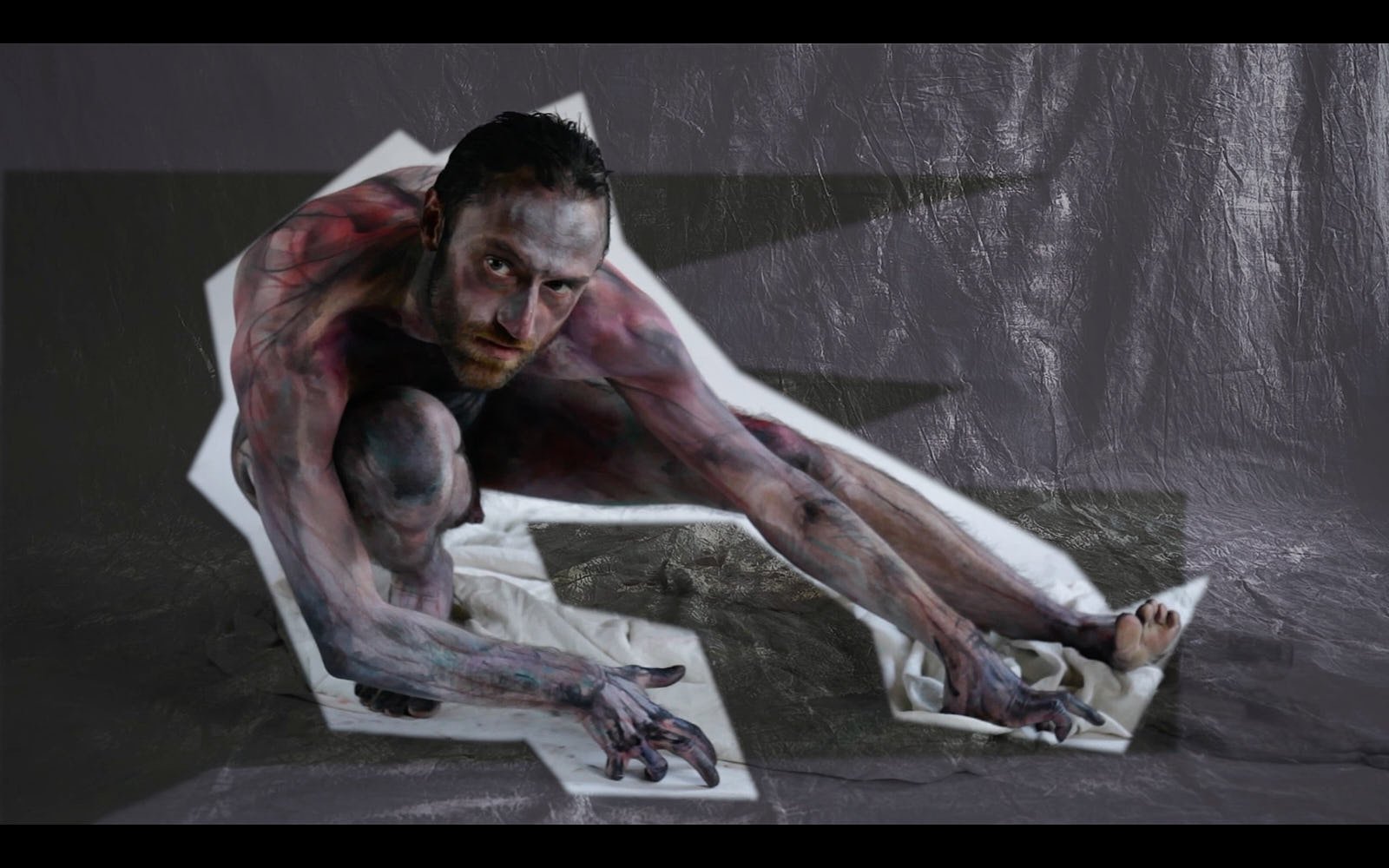
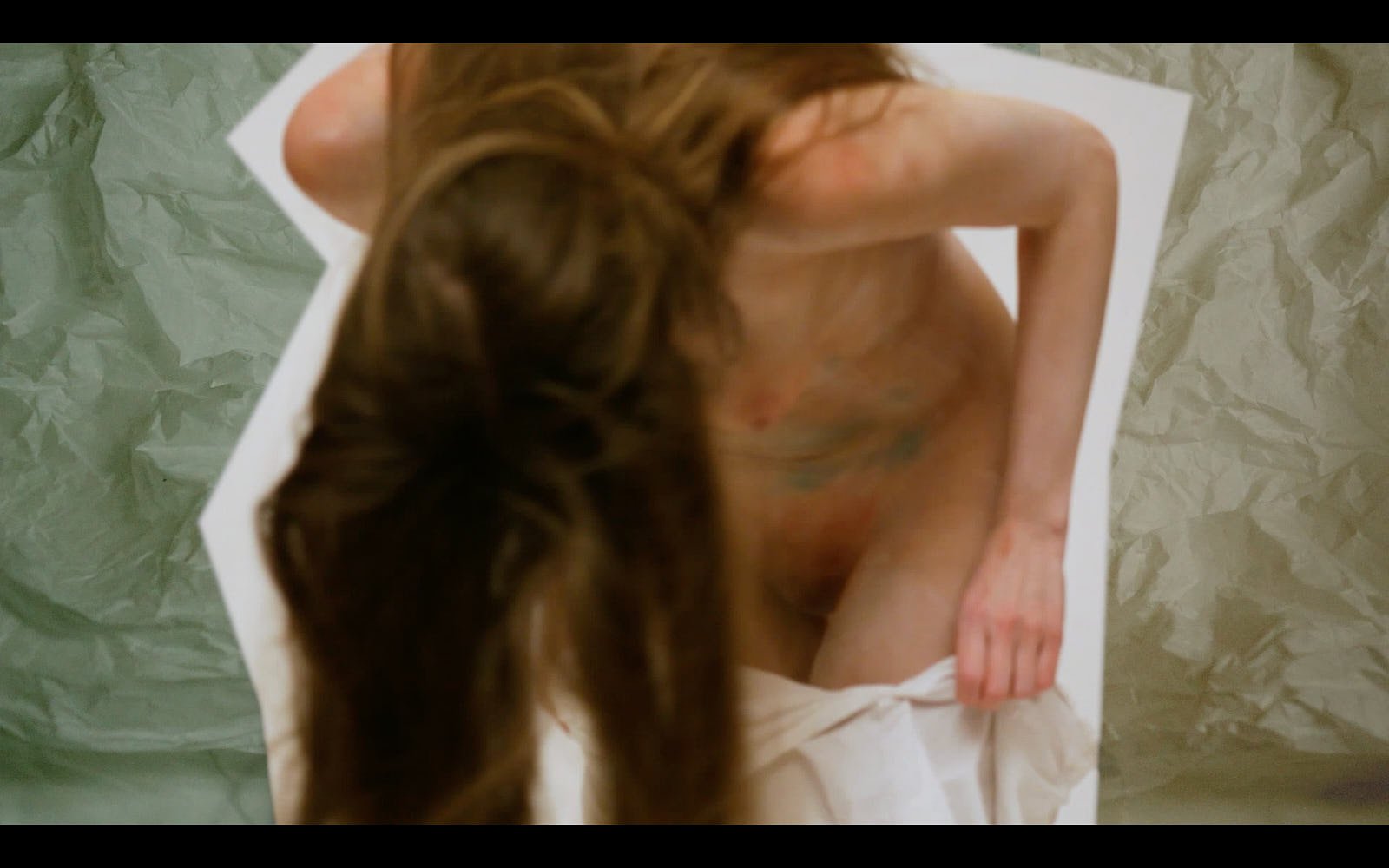
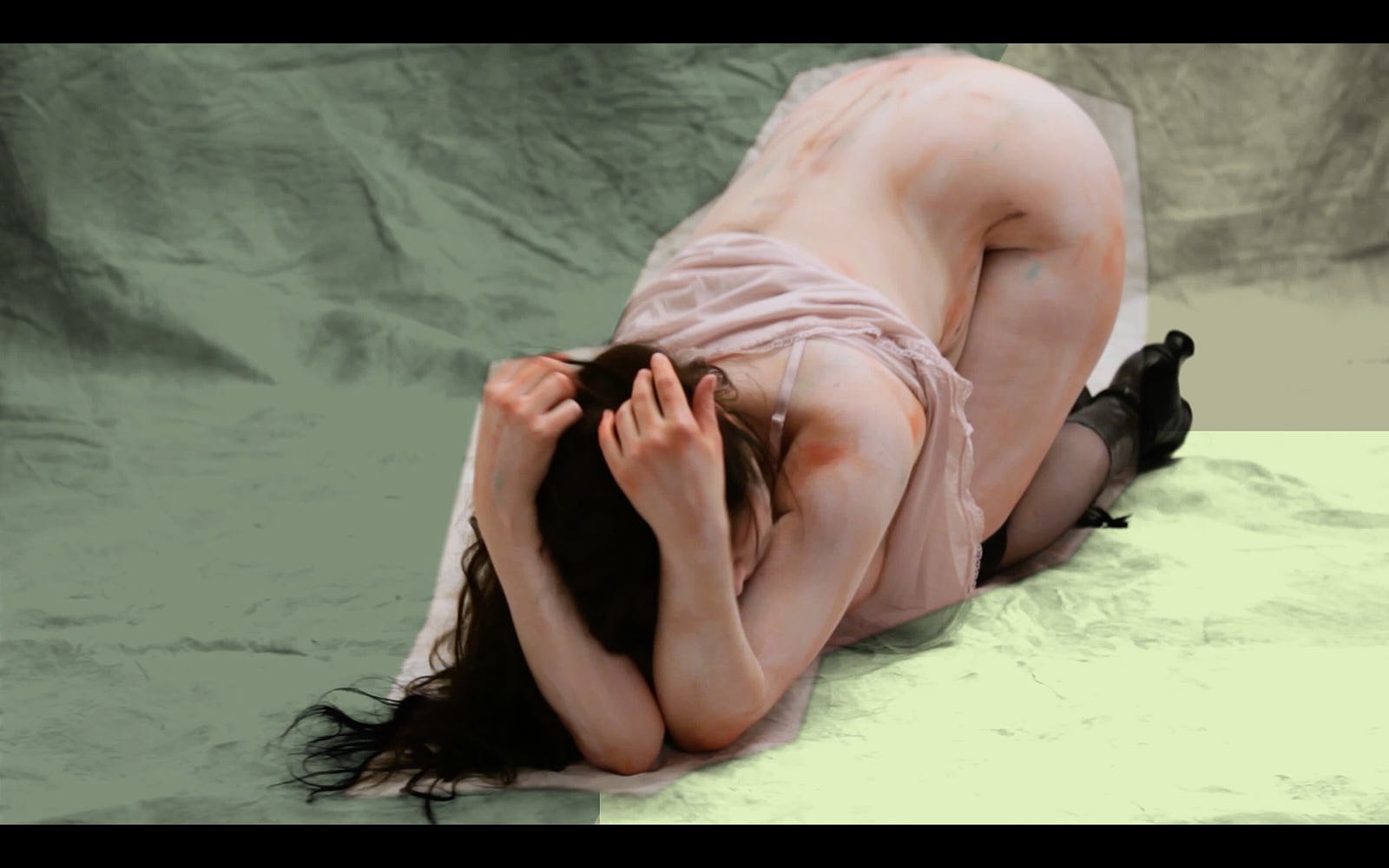
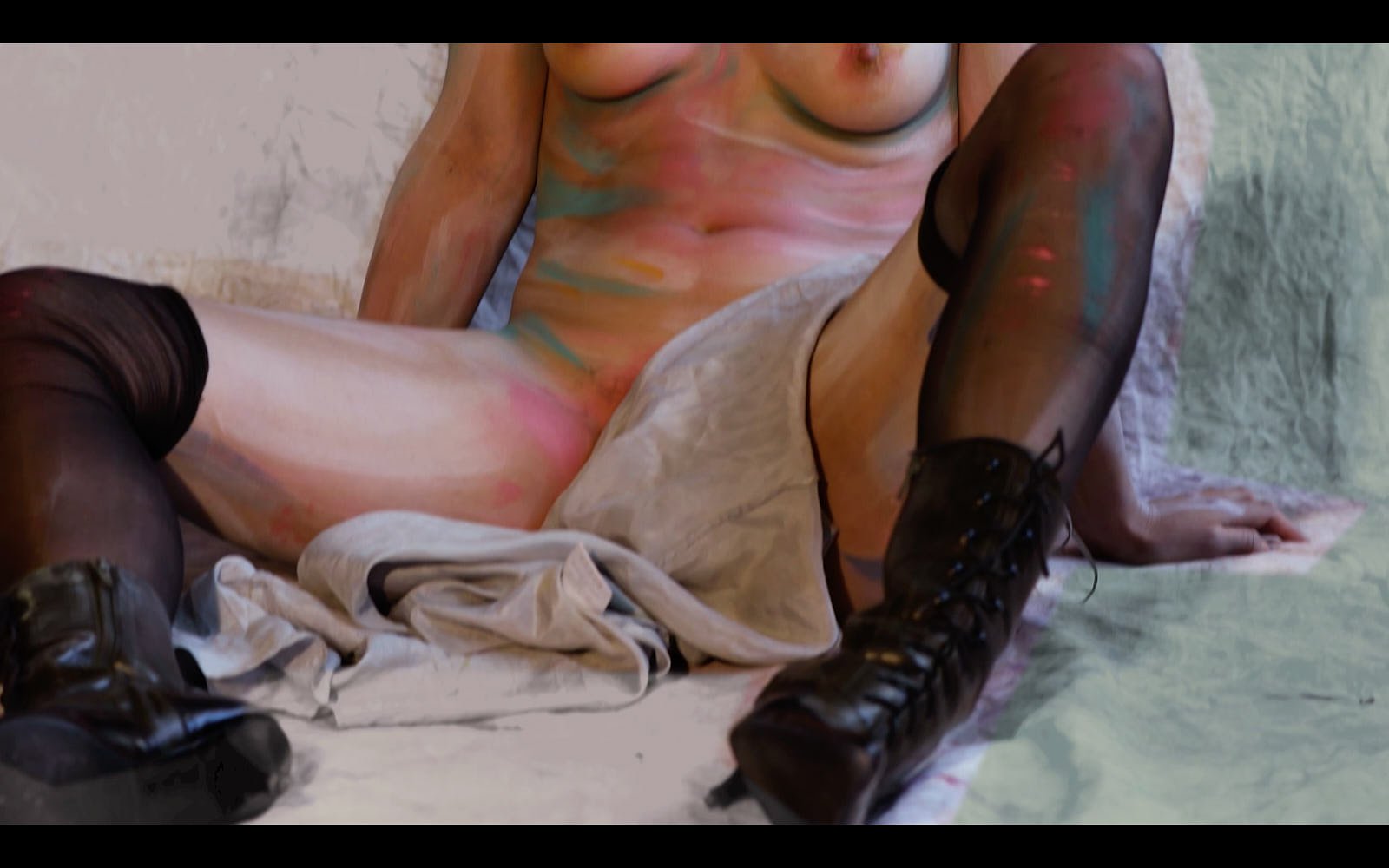
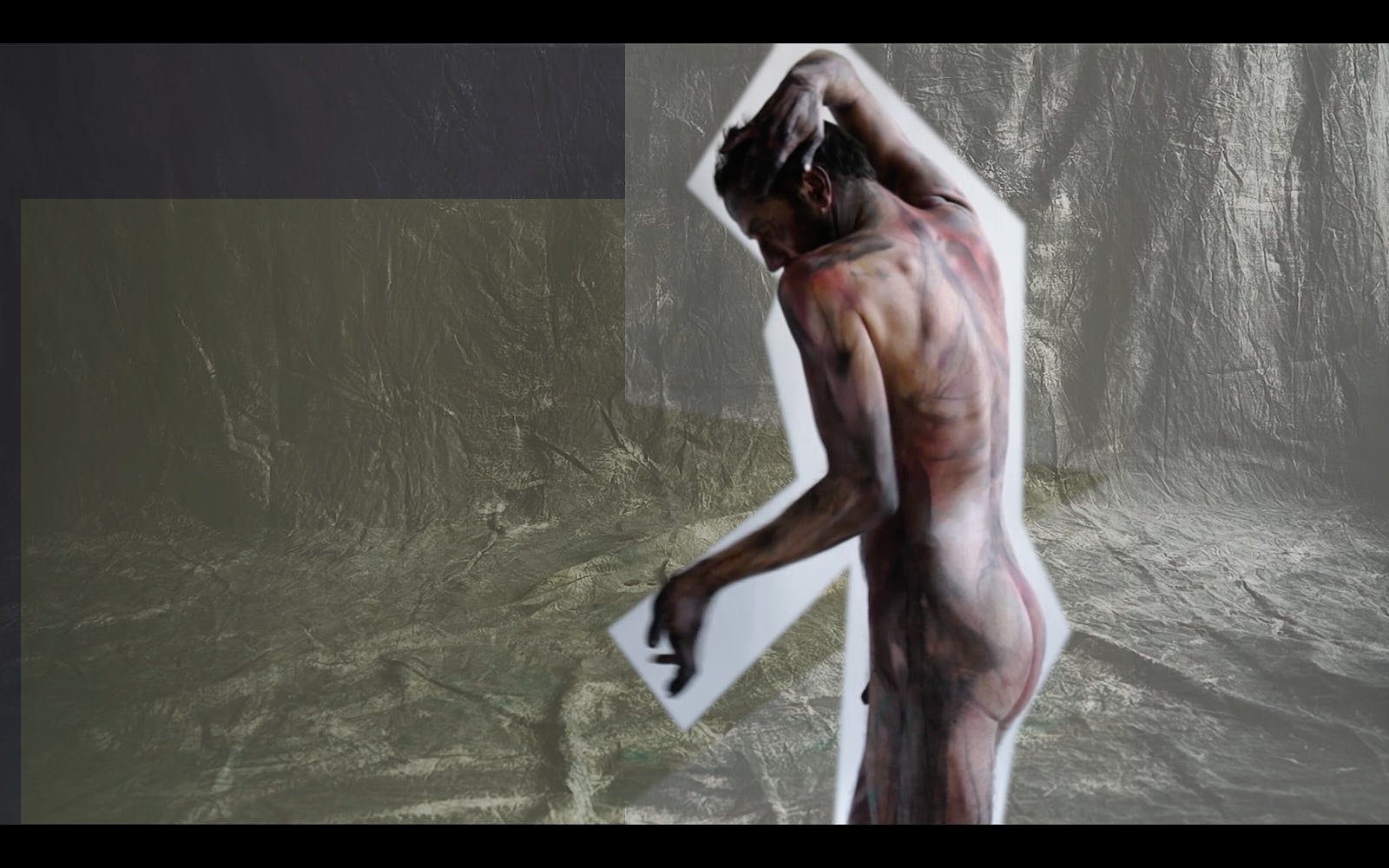
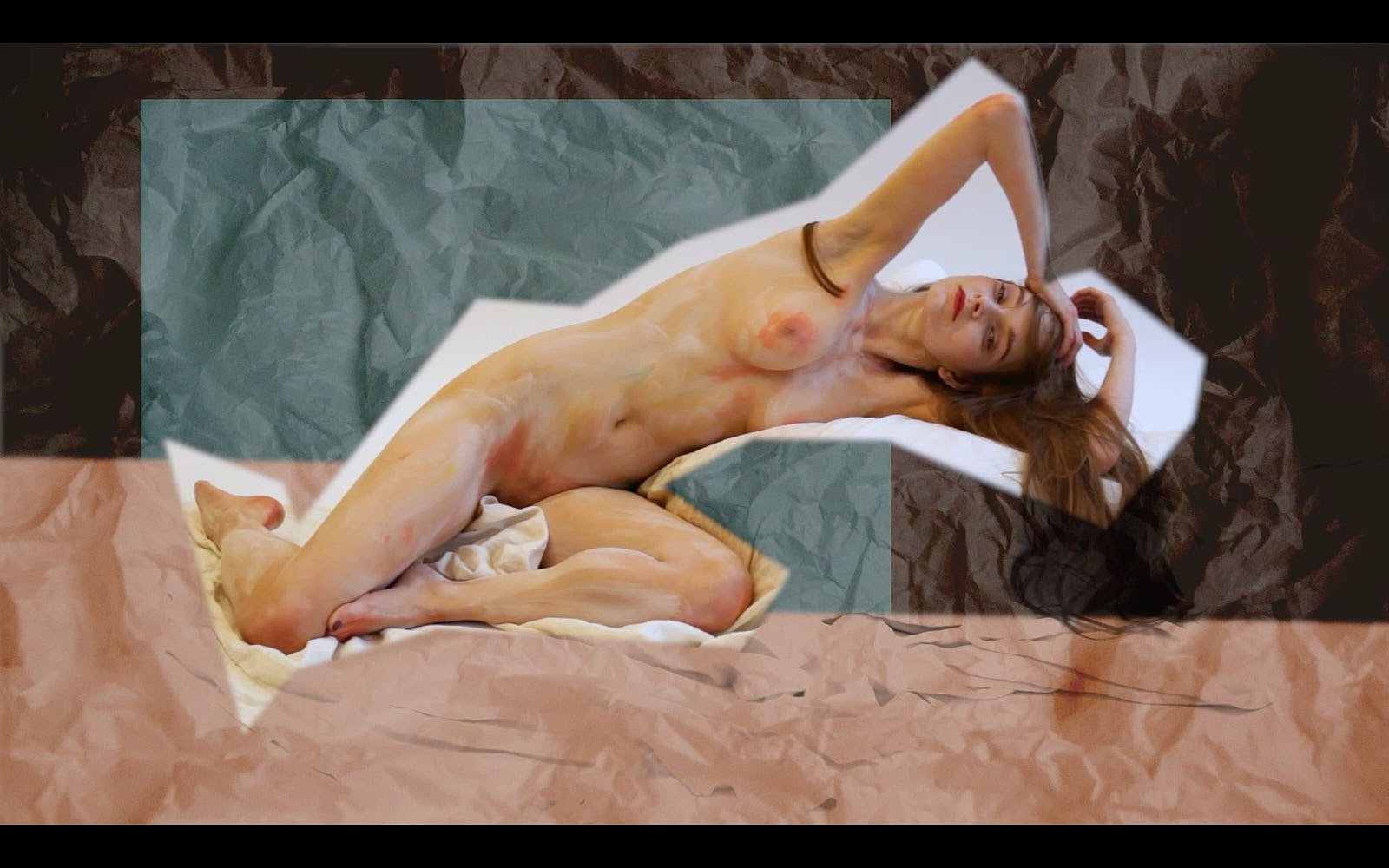
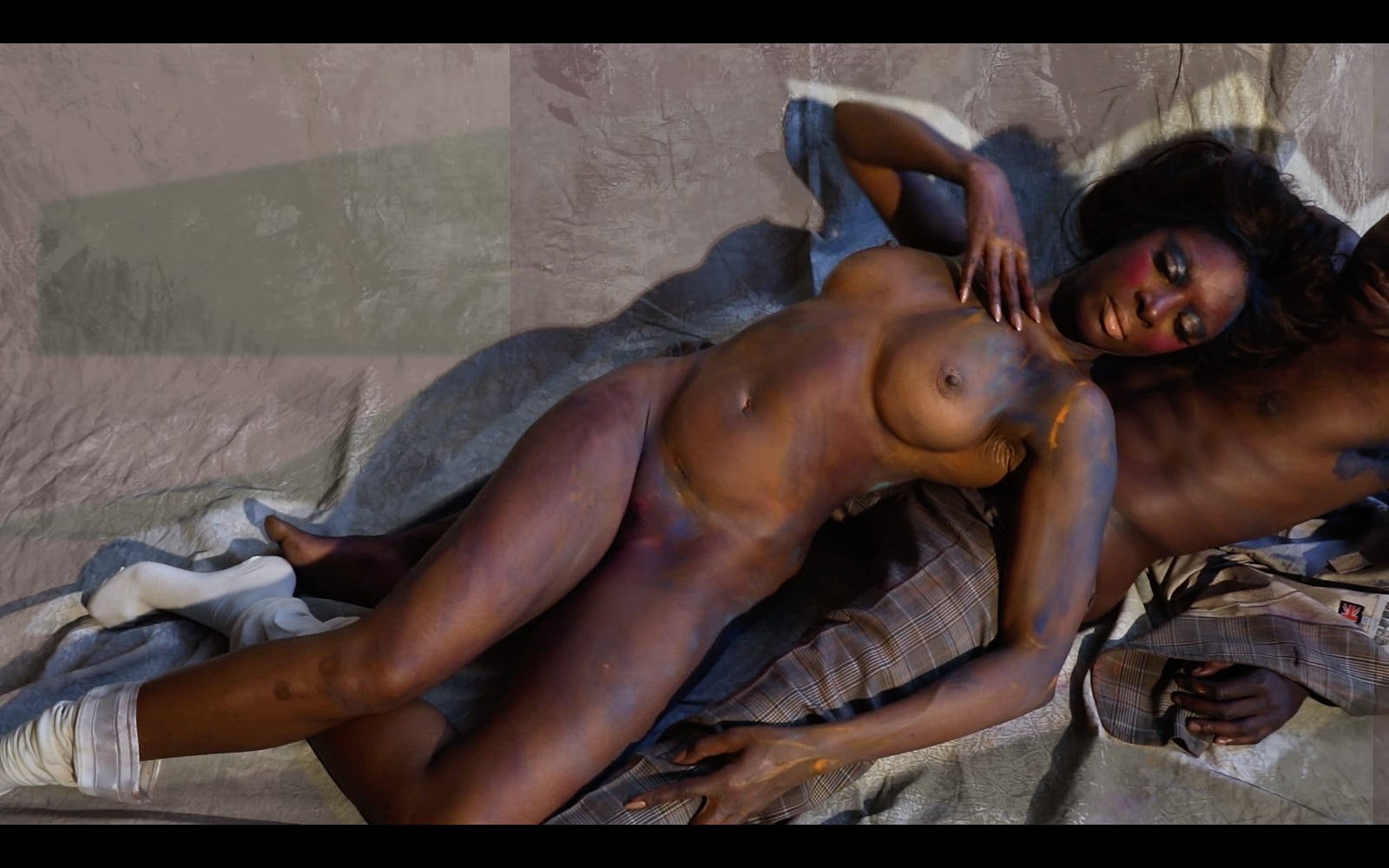

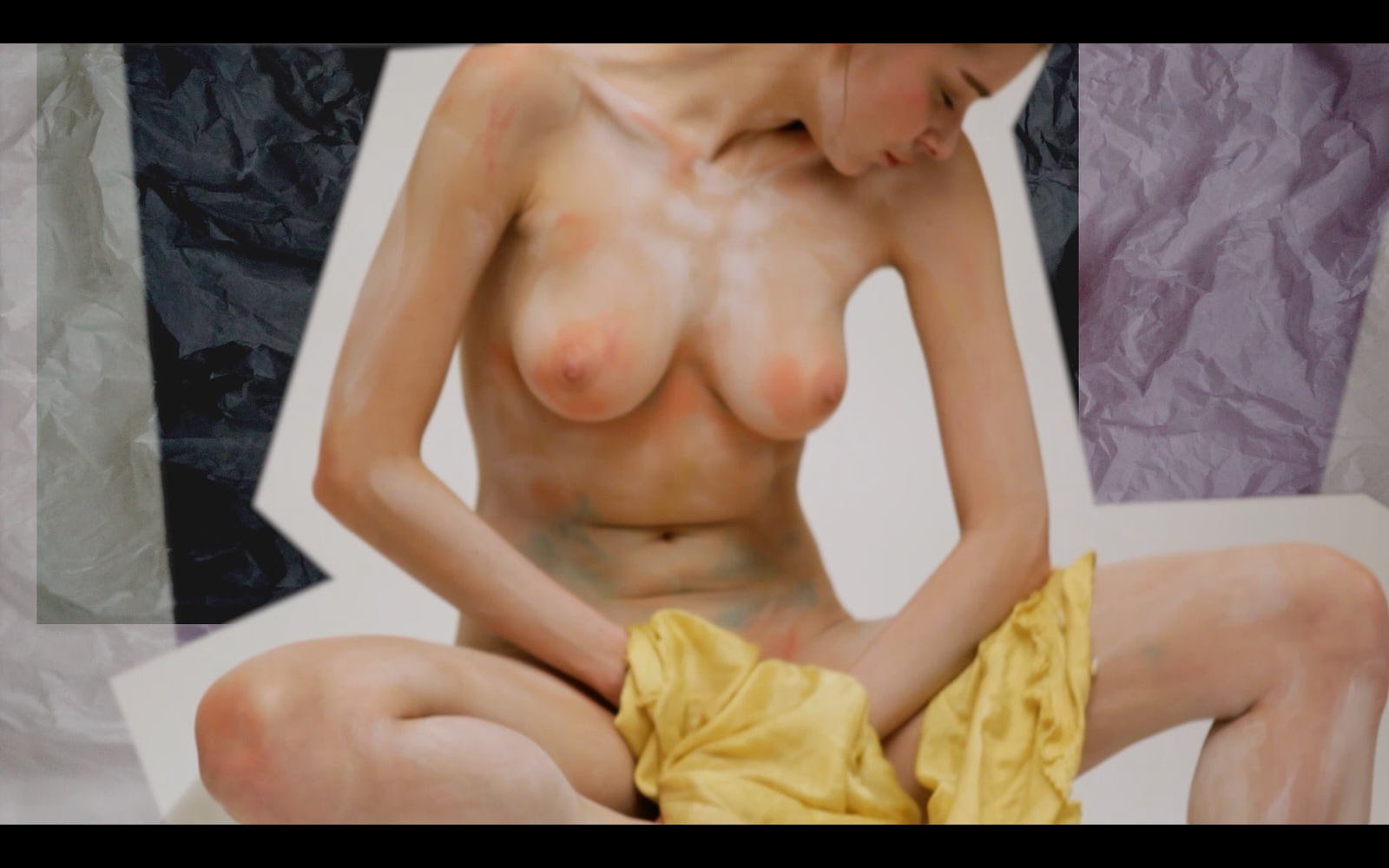
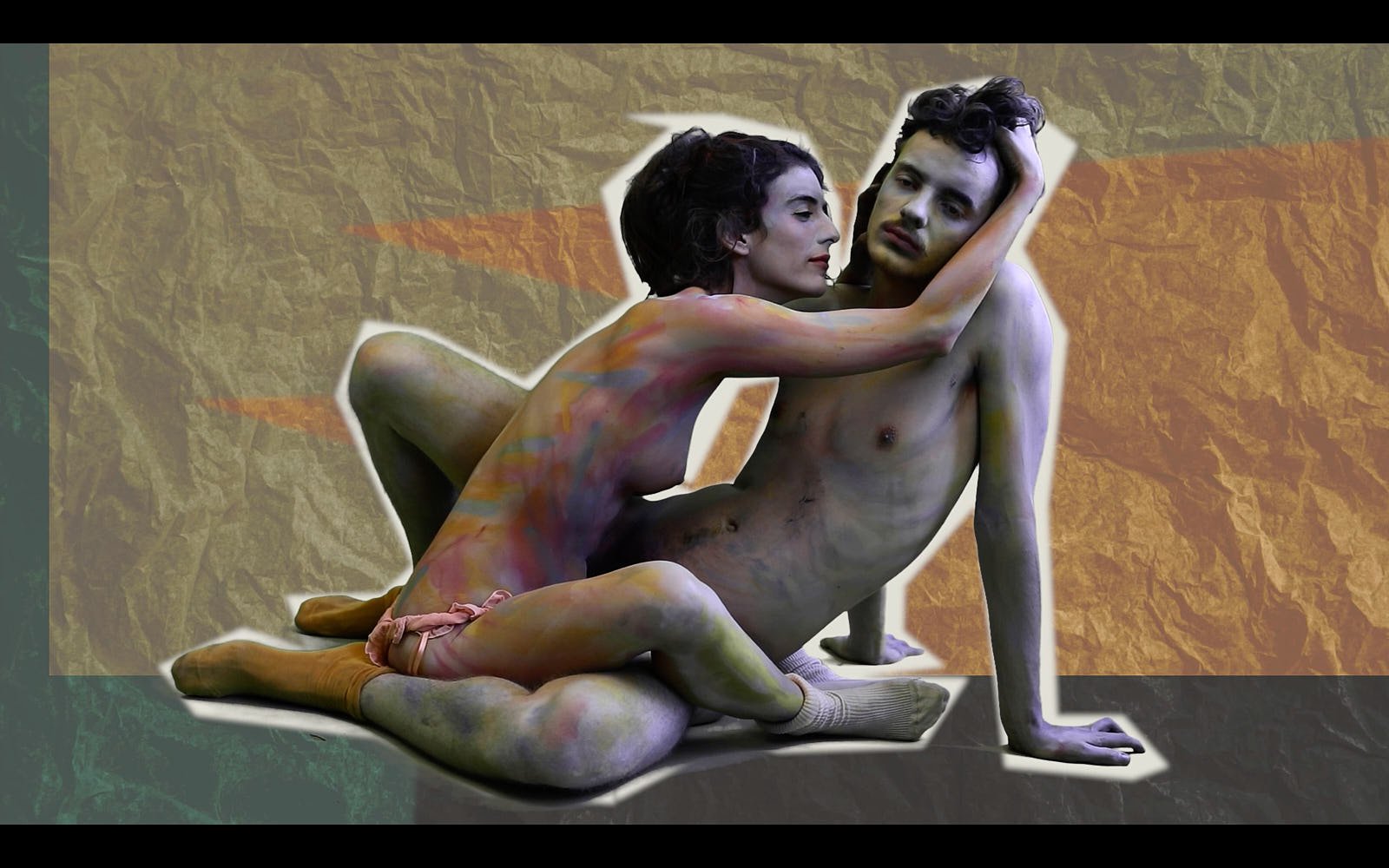
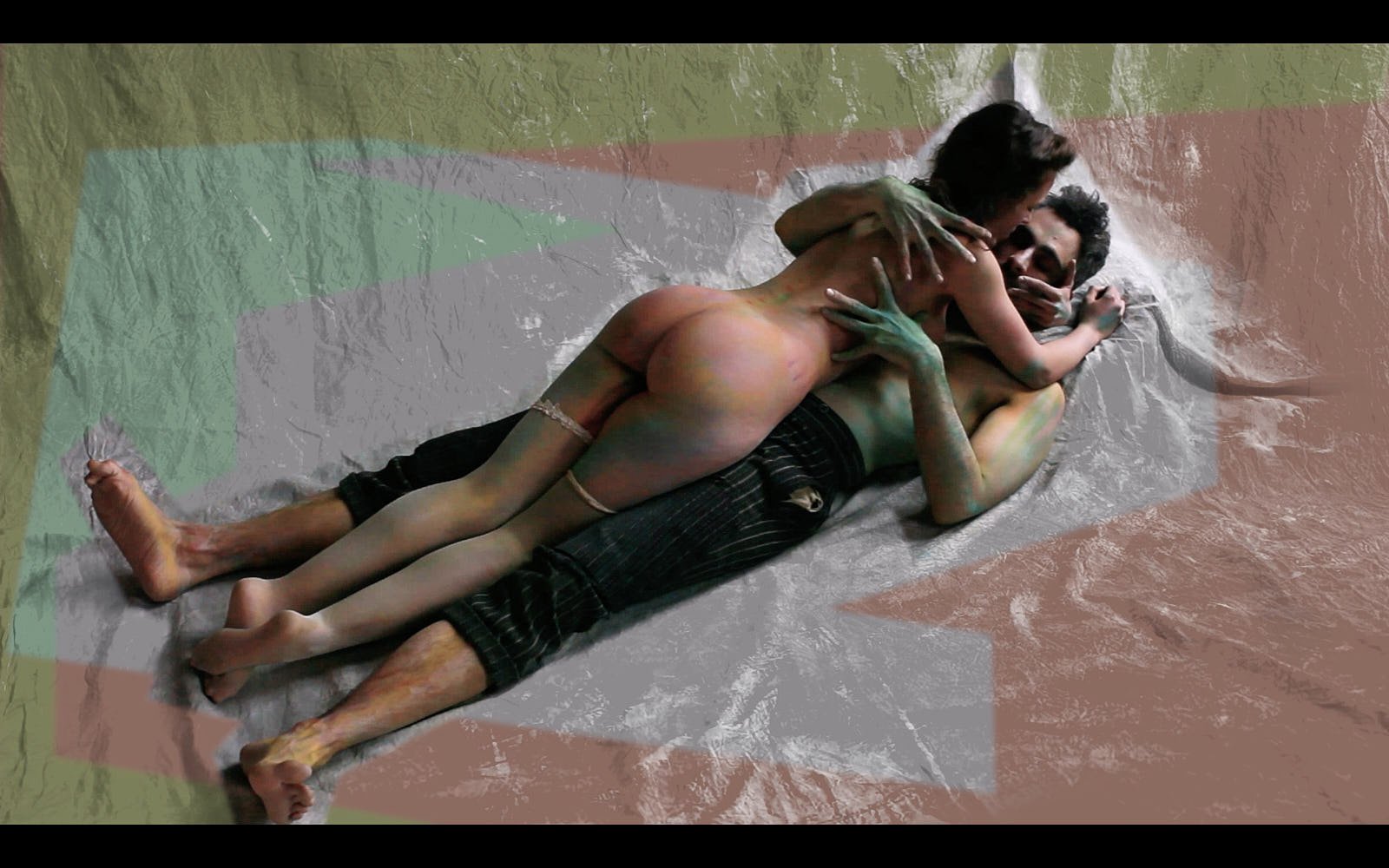
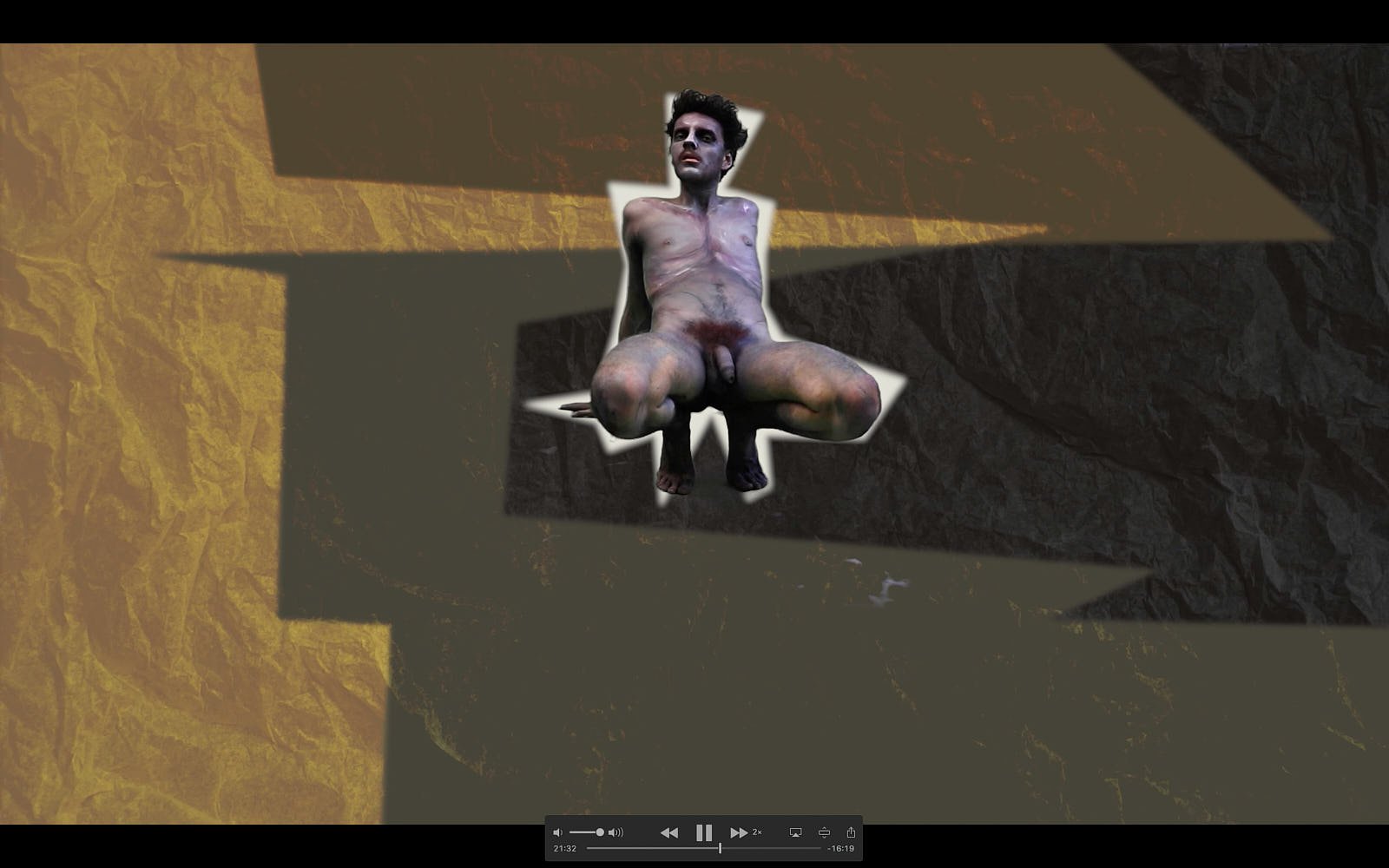
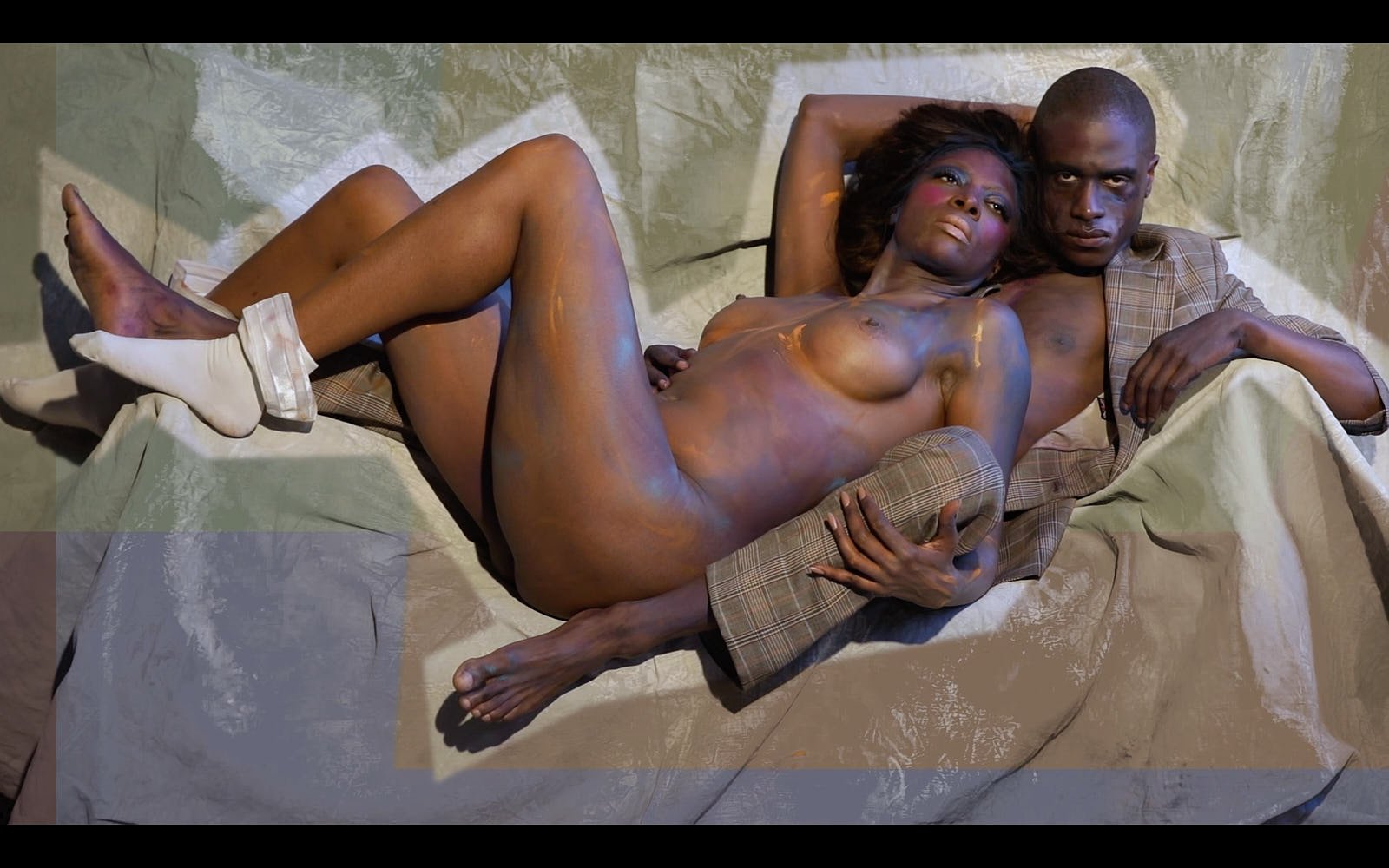
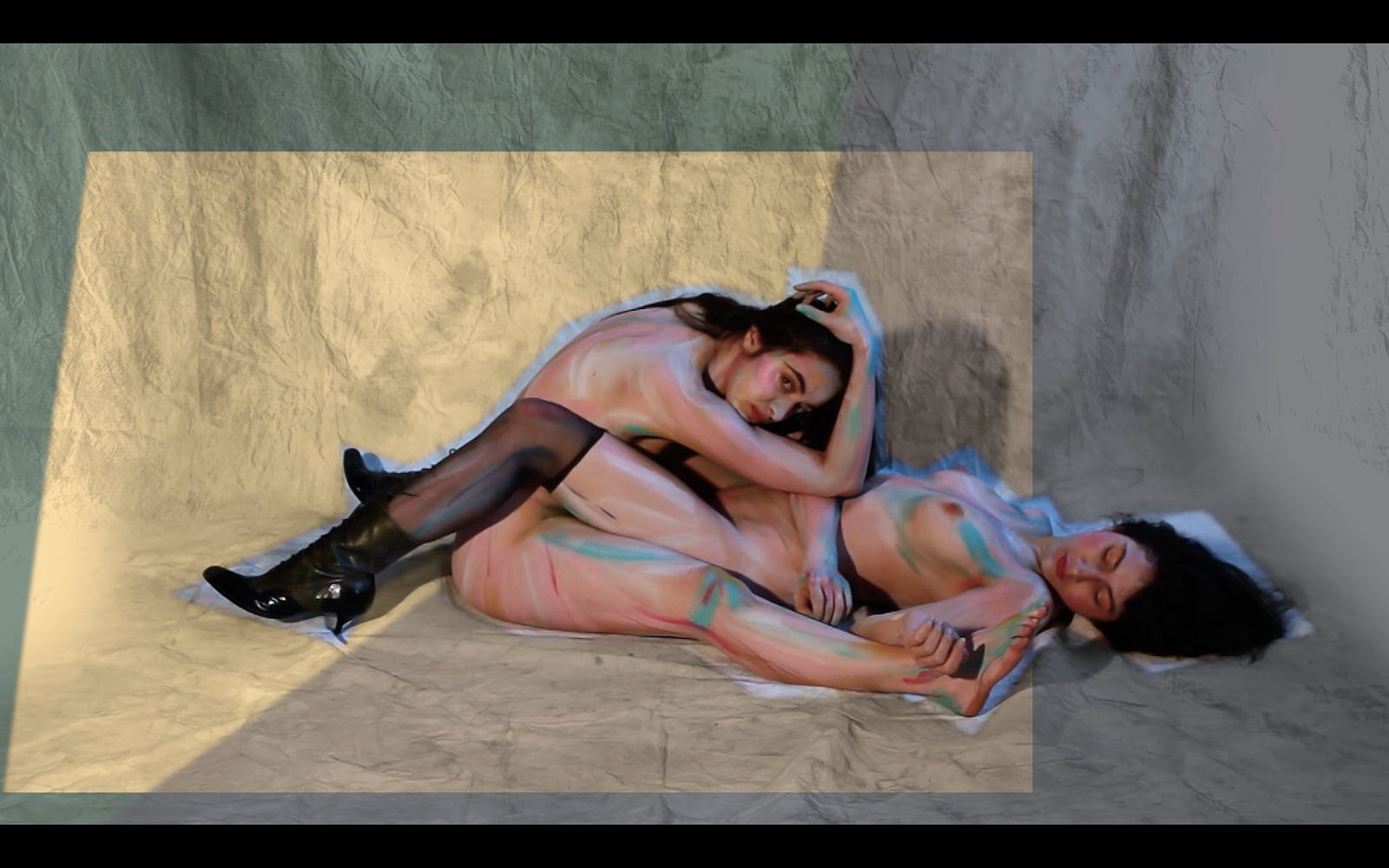

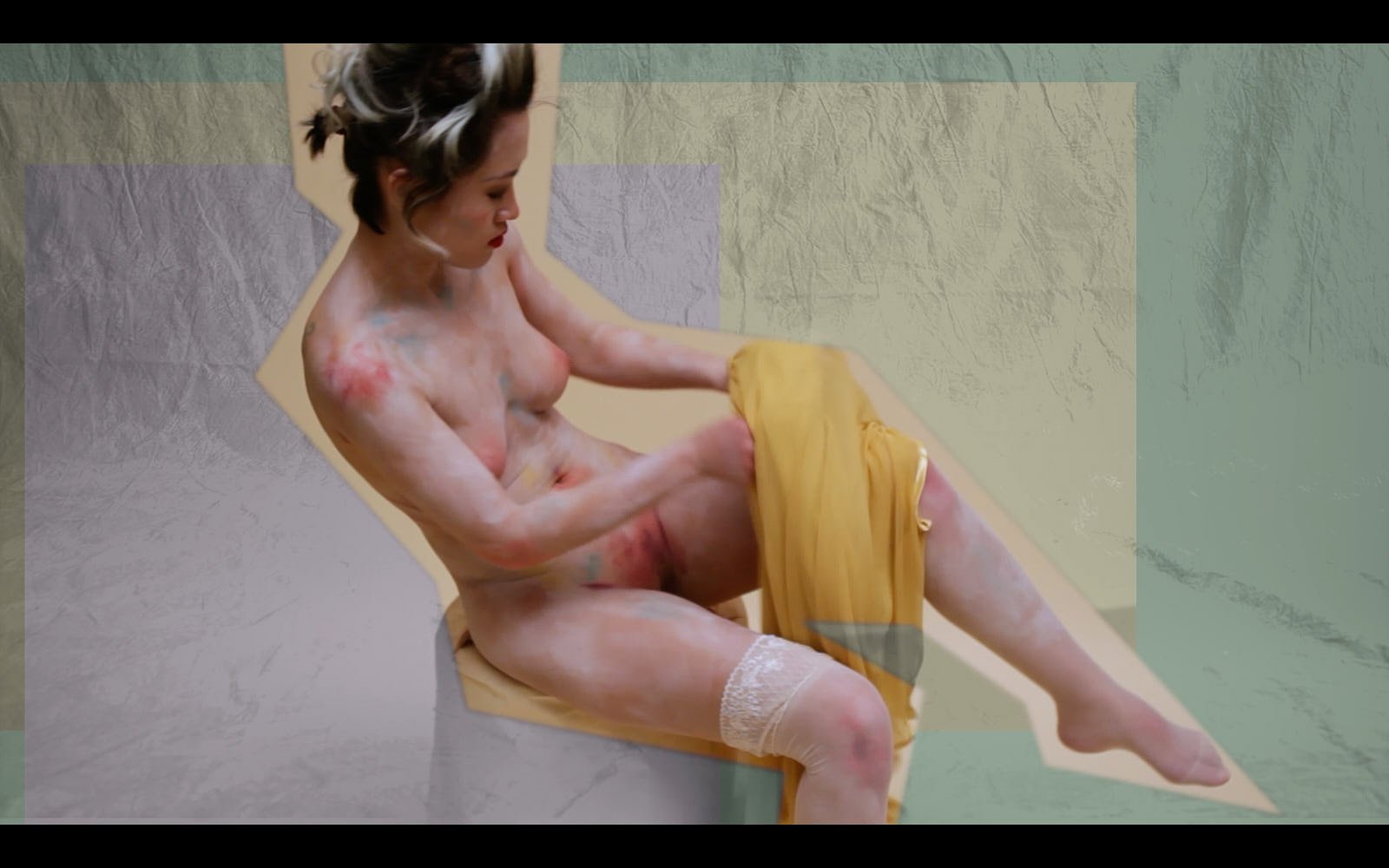
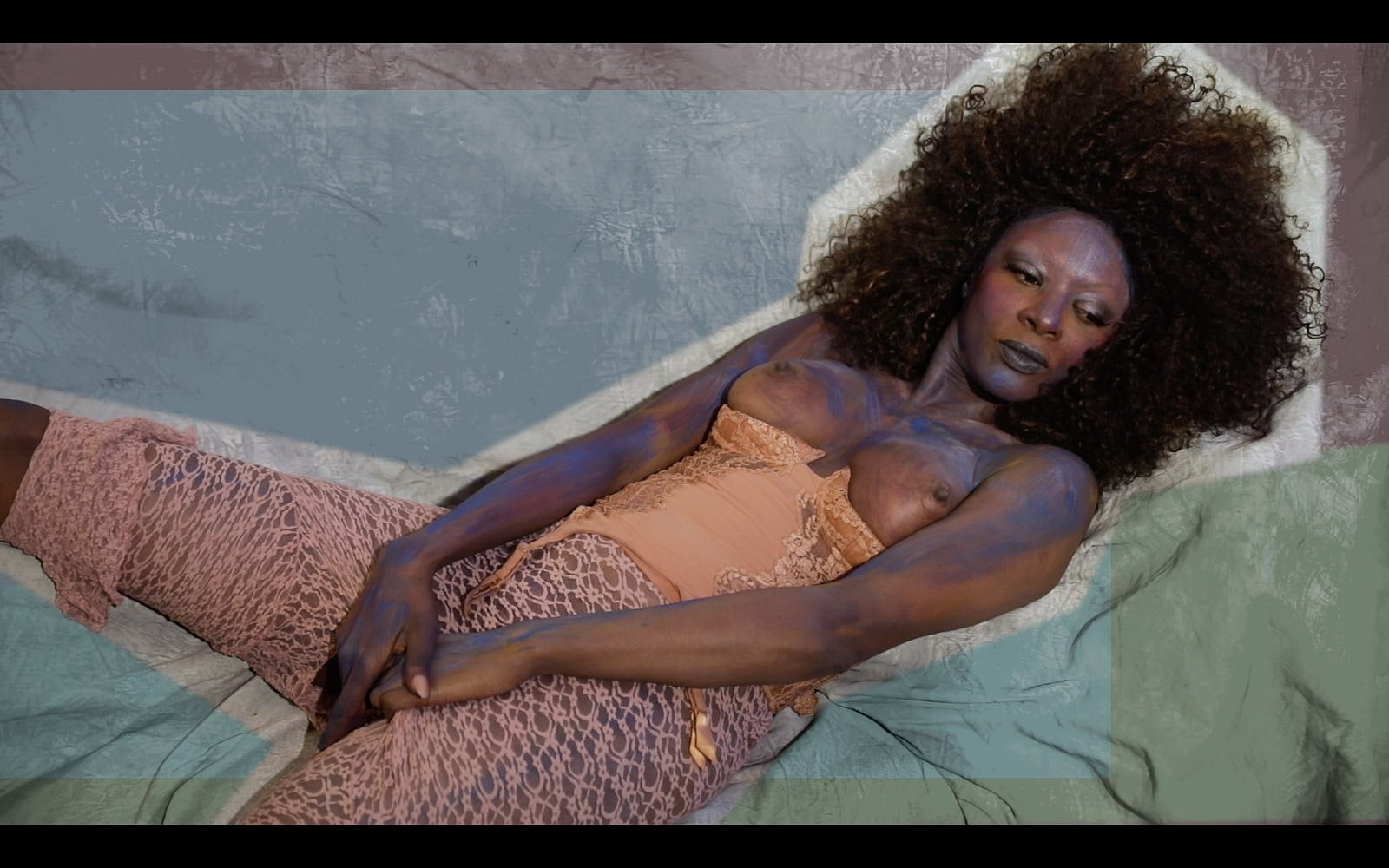

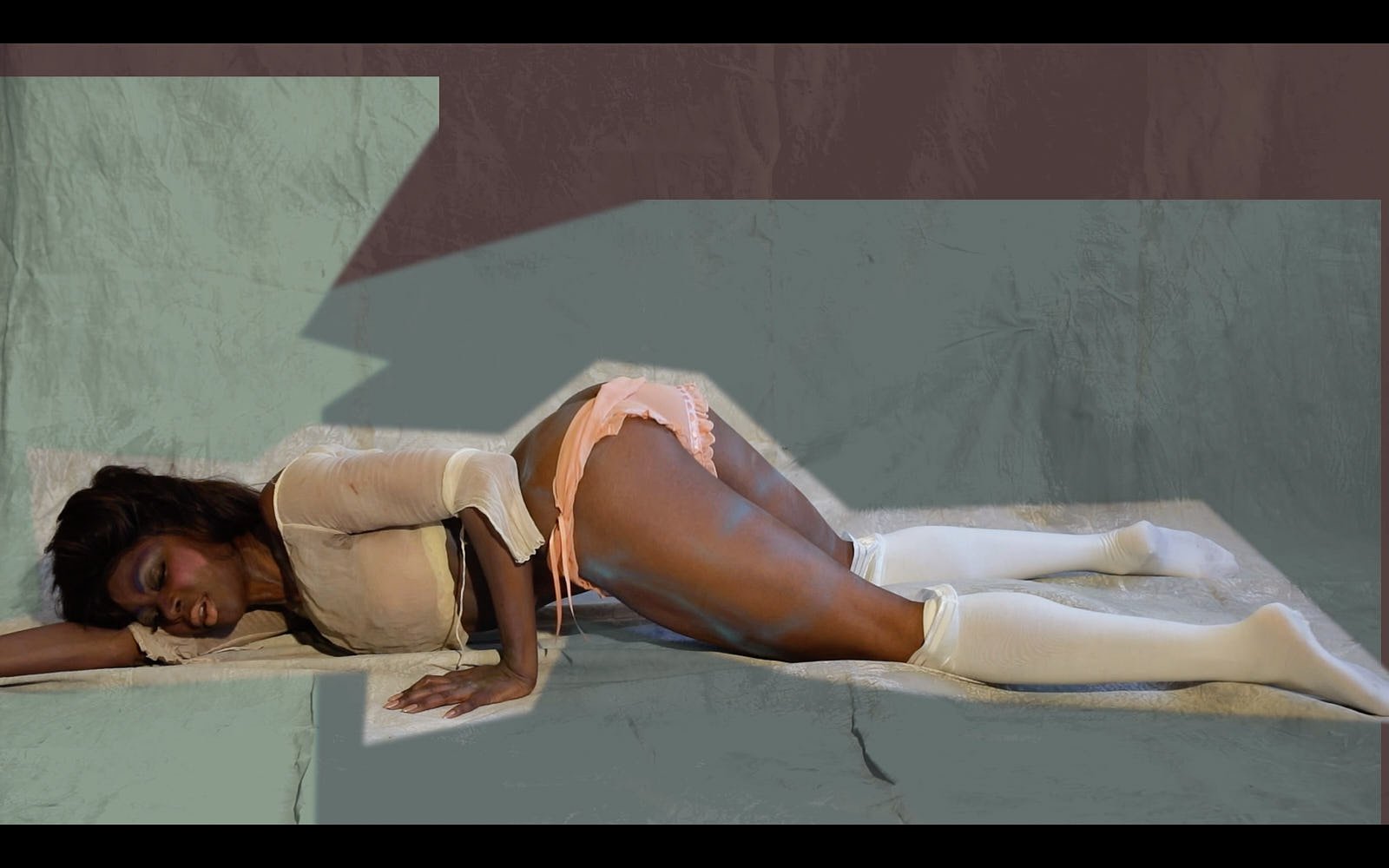
"We are exposed to pornography, cruelty, and sickness, while the beauty of our own nude bodies is forbidden."IBrosch
"We are exposed to pornography, cruelty, and sickness, while the beauty of our own nude bodies is forbidden."IBrosch
Unser Körper gehört uns
Notre corps nous appartient / Our body belongs to us
A new PHOTO and VIDEO Installation
by IRIS BROSCH
Homage to EGON SCHIELE 1890-1918 to commemorate the 100 years since his death.
Text by David Goldenberg
The body is as much subject to the same forces as being and thinking during the course of history, the same forces that wish to deflect us from comprehending these essential entities and components of who we are. It is this knot that Nietzsche's thinking revolves around. We are constantly ripped away from existing inside these entities. In that respect we exist for others. We live under the illusion that we are individuals and that we can think for ourselves, whereas in fact we are of course constructs. The mind tricks us into thinking we are individuals and society encourages this illusion. How do we recuperate our bodies and actual thinking? How do we sink back into ourselves, and reconcile ourselves with the materiality of our bodies without succumbing to guilt and disgust? How do we find an art that strikes a balance between contemplation and physicality before crossing over into disgust through exposing to much matter, where we can no longer bare to look, seems to be the question Brosch raises throughout her project's! This is about taking the male puritan history of philosophy and coating it in flesh and liquid.
We live under the illusion
that we are individuals and that we can think for ourselves, whereas in fact we are of course constructs.
The body is subject to the same dilemma as existence, we are subject to the daily bombardment of bodies, pornography, overload of information and everyday things, and for that reason because we are overfamiliar and bored and exhausted with this experience we think we recognise and understand what is before us or the thing we occupy. Quite the opposite. These are images given to women by men, and images given to men and women by the apparatus of society. While our desires, impulses, drives are shaped, compartmentalised, limited and prescribed within the limits of pornography, law, consumerism and capitalism.
How are we to understand Brosch new work that uses Schiele's work as its source within this context? A society that is excessively controlled and marked by an odd puritanism, where on the one hand we are subjected to pornographic images rather than real naked bodies, and excessive censorship, where adult desires are brought down to the level of children, where our attitudes to bodies and sexuality is encouraged to work on the level of children and infantilism. For that reason, and this may sound odd, we now urgently need an art and imagery for adults.
Nevertheless, does Schiele's iconography offer the best route into mining these issues? If that is what Brosch is actually doing. Because we are not talking about straight appropriation in the manor of Sherry Levine's late 1970s remakes of Schiele's pictures. Brosch’s new work doesn’t function as appropriations. There is no distancing or standing back from the material and cultural artefacts. However, in the portfolio of painted photographs images, showing painted energised bodies and body parts, there is clearly an inquiry taking place.
The pictorial elements are taken apart, isolating single figures or body parts gesturing hand or a penis against a monochrome background, and recombined using new actors and characters, someone with the features of van Gogh, people from different cultures whether a Chinese lady or an African man and woman, a devil, mixed together as the work weaves in and out of the over familiar Schiele mannerisms.
The video is doing something entirely different, something to do with synthesis, that clashes together video, photography, live actors, painted bodies, pressed inside a shallow cubist space, set against a constantly moving textured background. These new works operate significantly differently to the large scale ornate couplings of groups of bodies that Brosch examined in previous projects.
When we look at Schiele's work, and the same could be said of Munch, with their depiction of sex, nudity, female sexuality, bodies which cross over into taboo, menstruation, depicting teenage boys and girls, masturbation, and so on, you are made to feel uncomfortable. On the one hand these are clearly pictures by men, but at the same time you sense they are collaborative, searching for a language of the body for themselves and for women.
Iris Brosch working in her Paris Atelier
I also don't think that artists would be allowed to make these works today, nor do I think such works are justified or appropriate in this historical context. I think we can safely say the pictures close down representation of physical and sexual identity. Now we are all human beings a new language of the body is required. In that respect you sense that Brosch’s new work has allowed her to take a stride forward, allowing her full expression of desire. More raw and sculptural, less burdened by ornament, more pictorial and closer to the language Brosch is searching for.
Today or in the future a recuperation of the body and thinking takes place together and that is an important difference to orthodox philosophy and history.
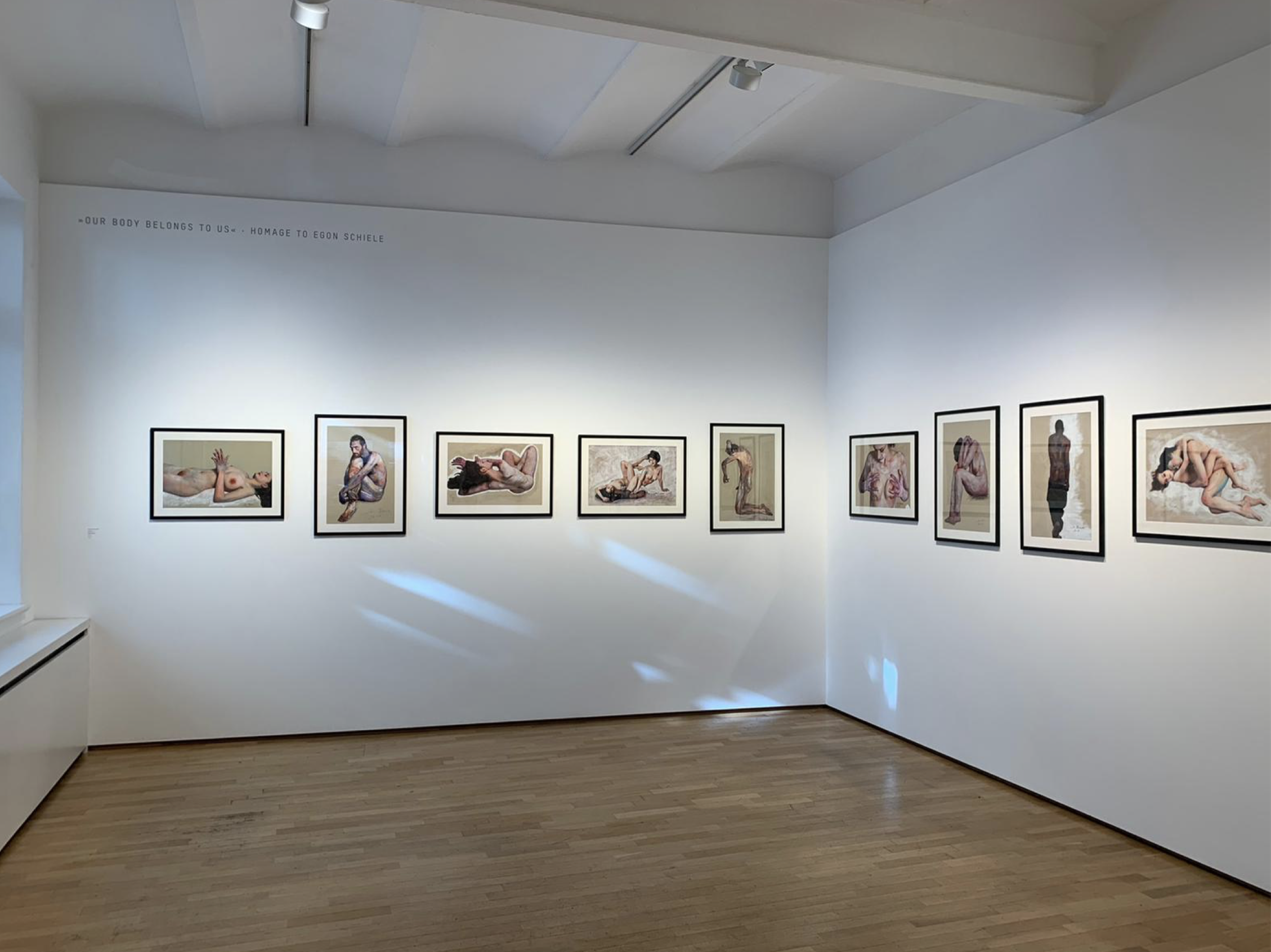







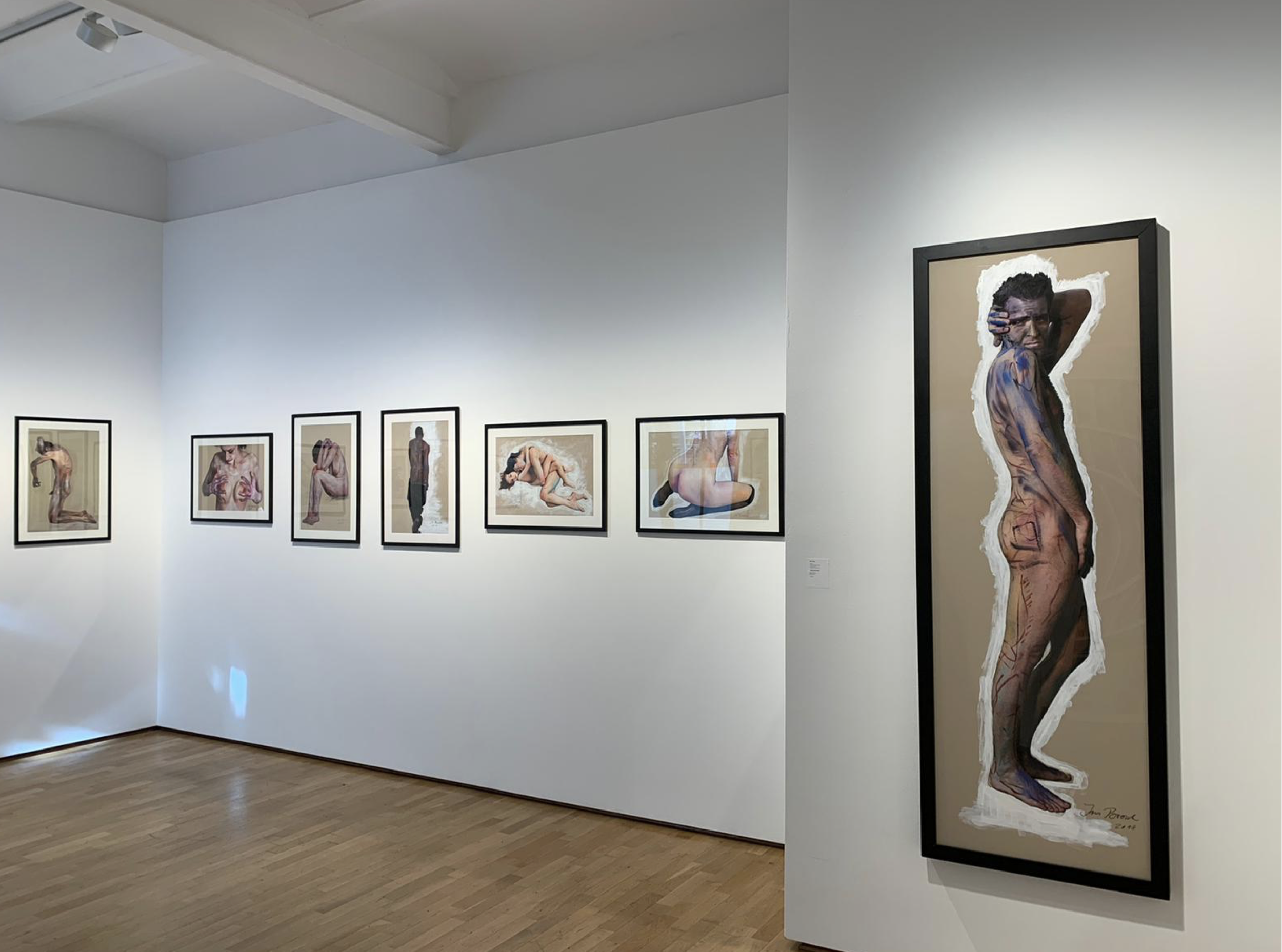
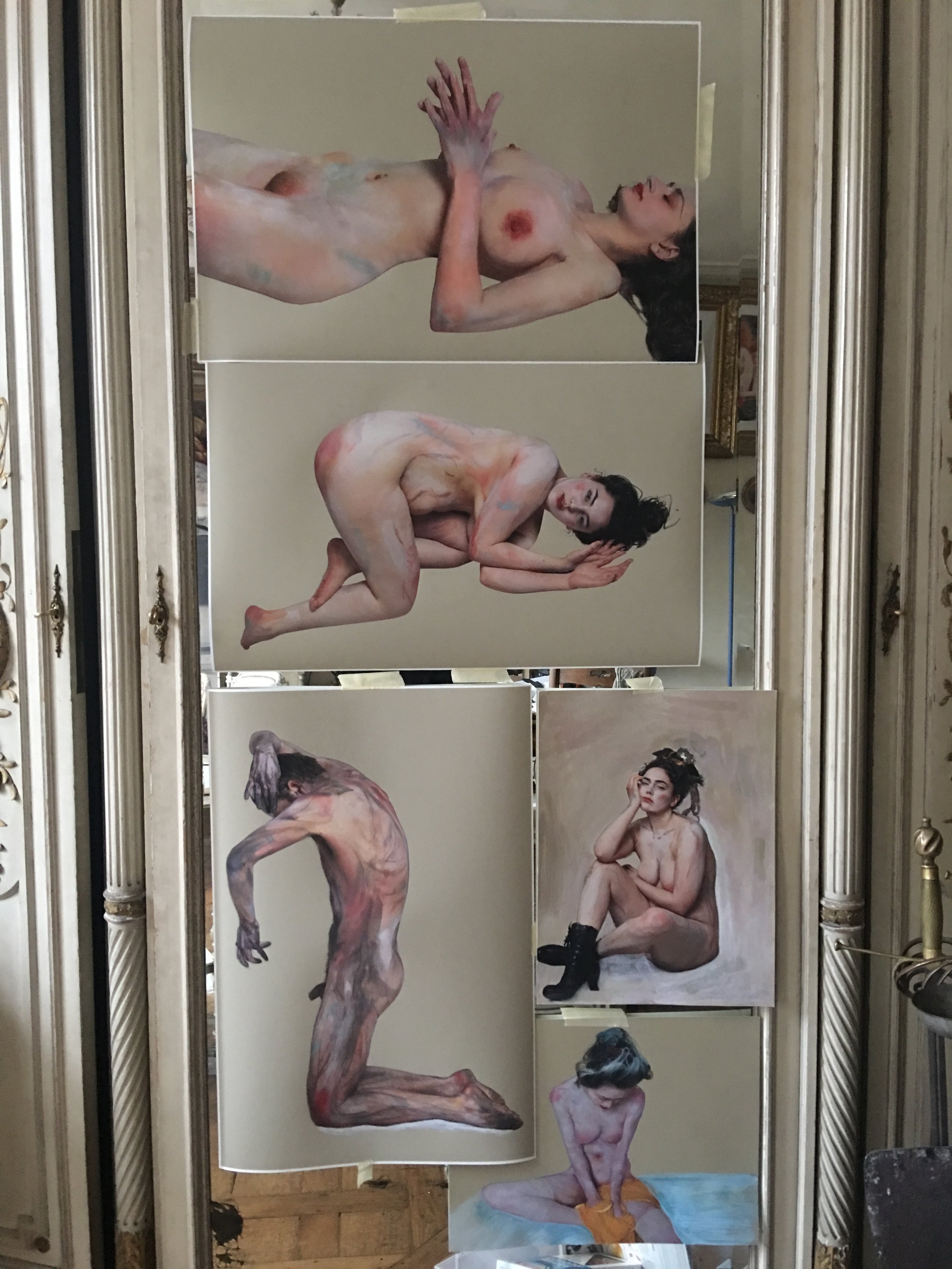
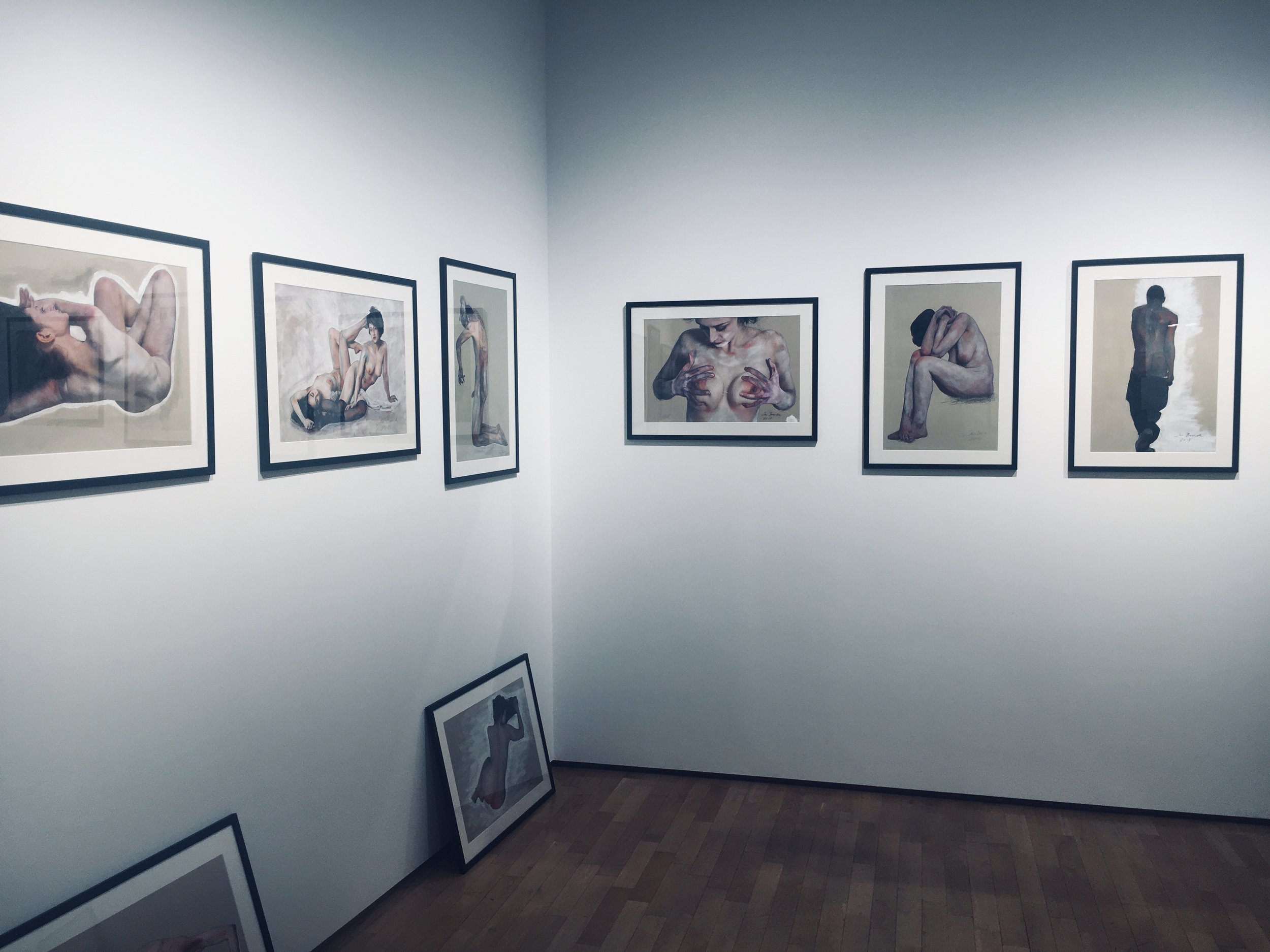
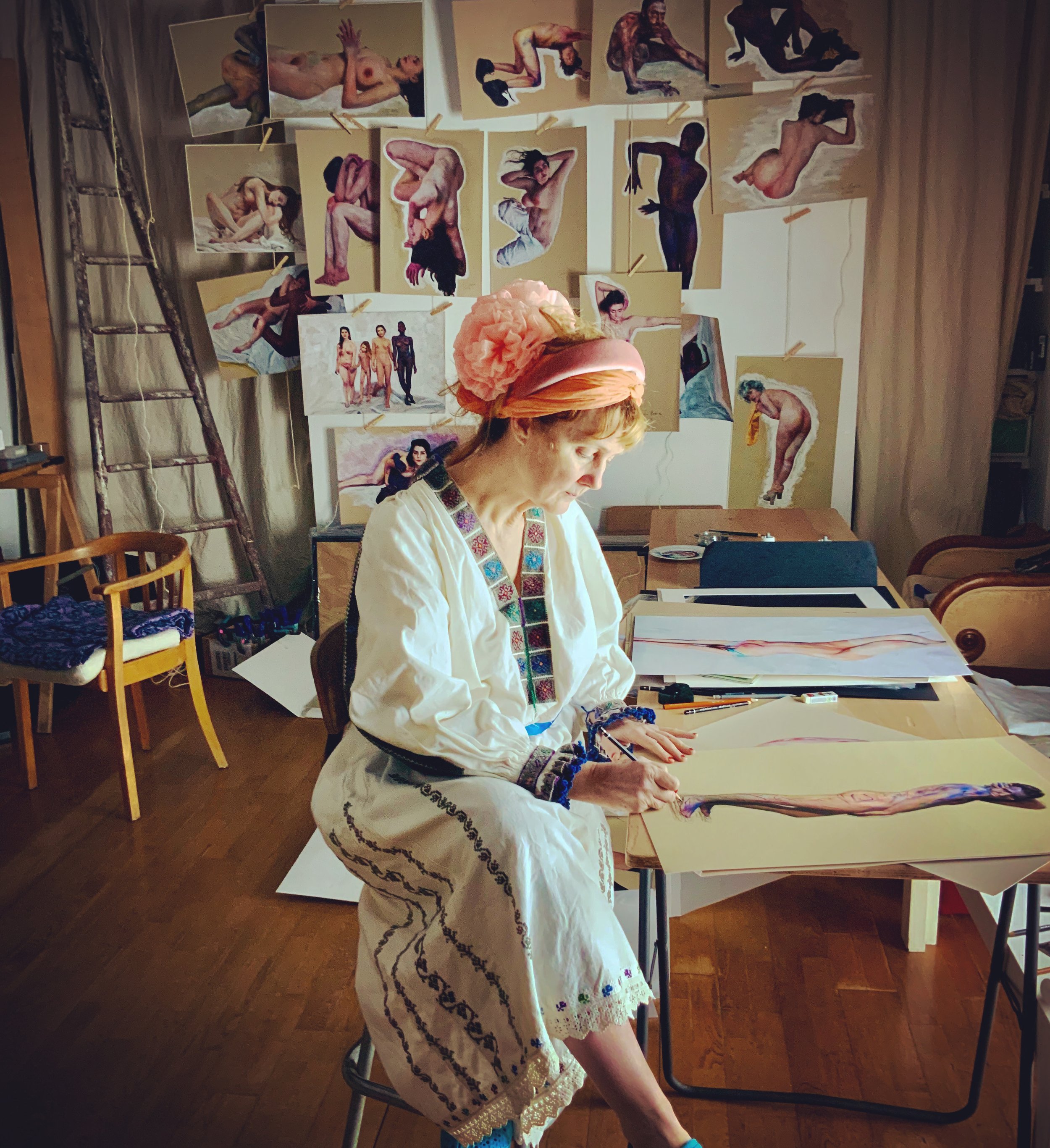
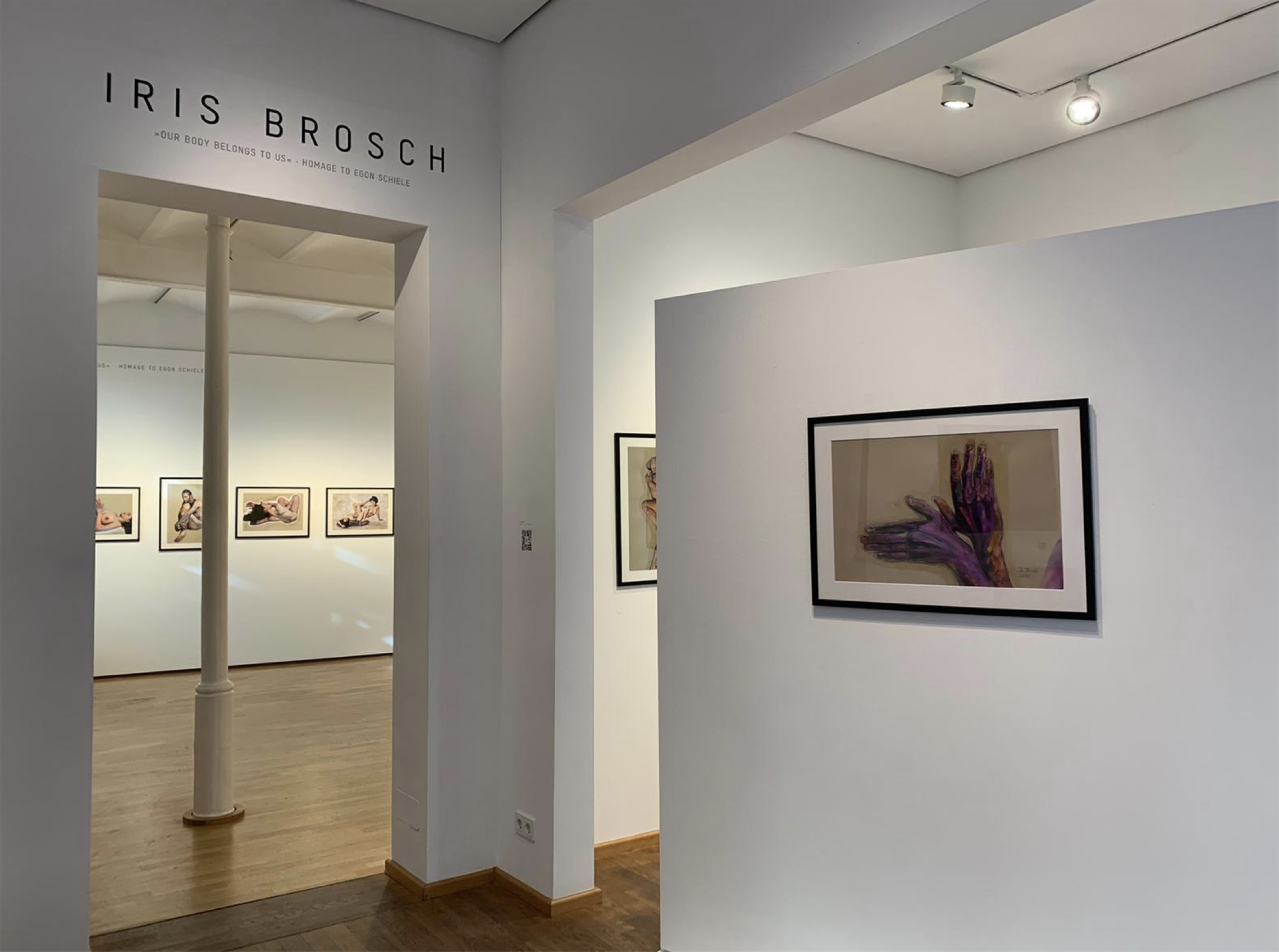


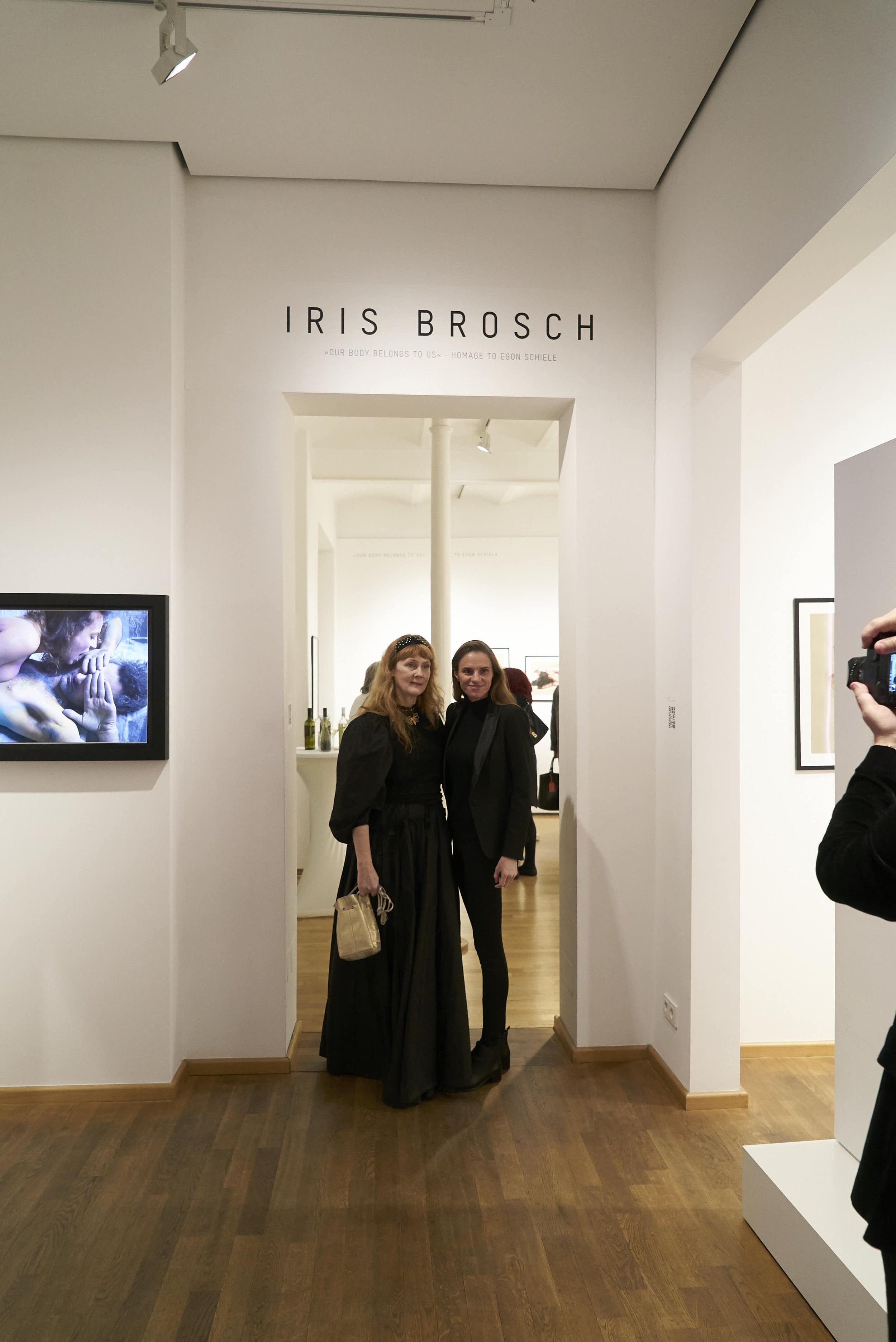
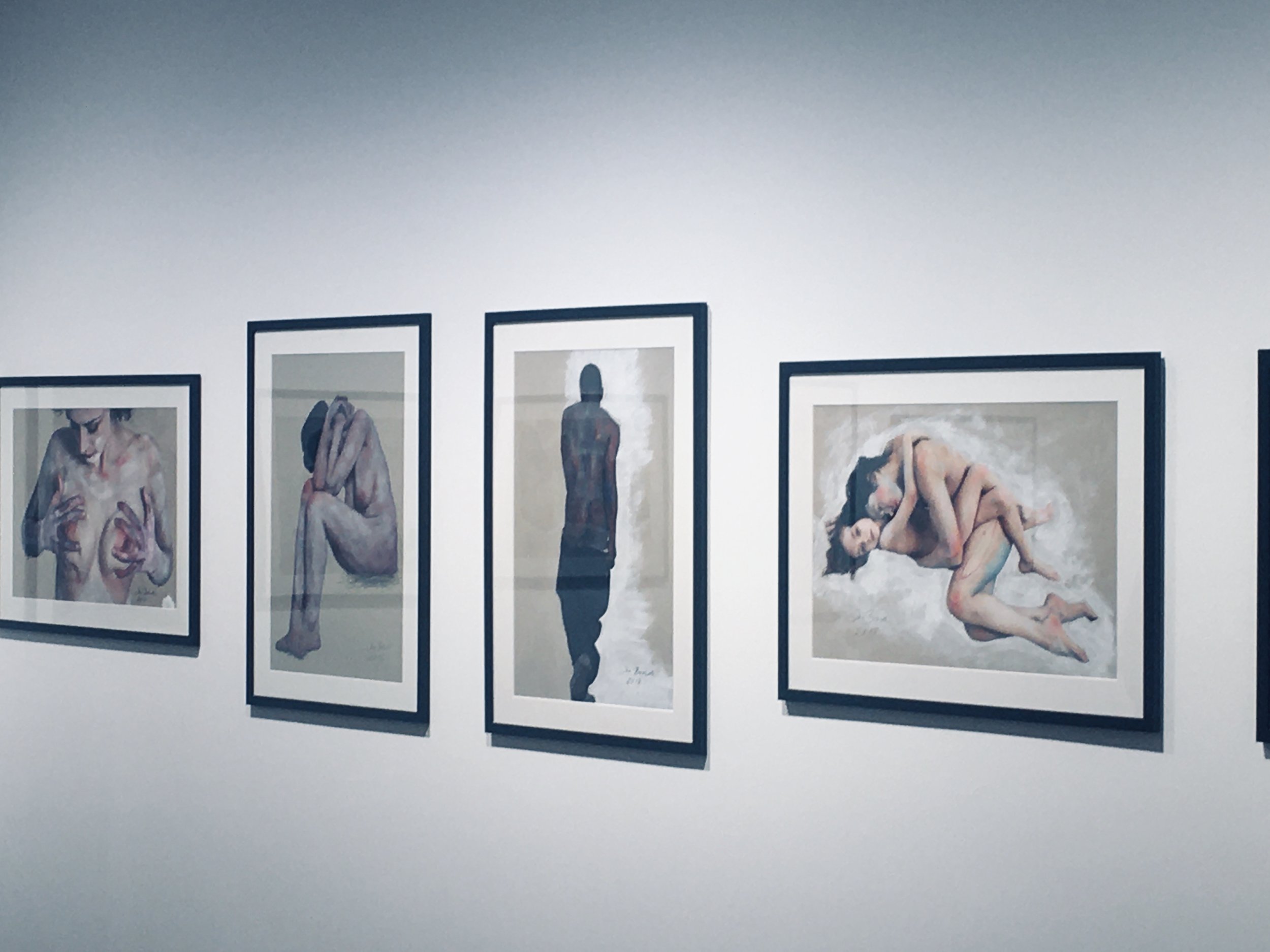

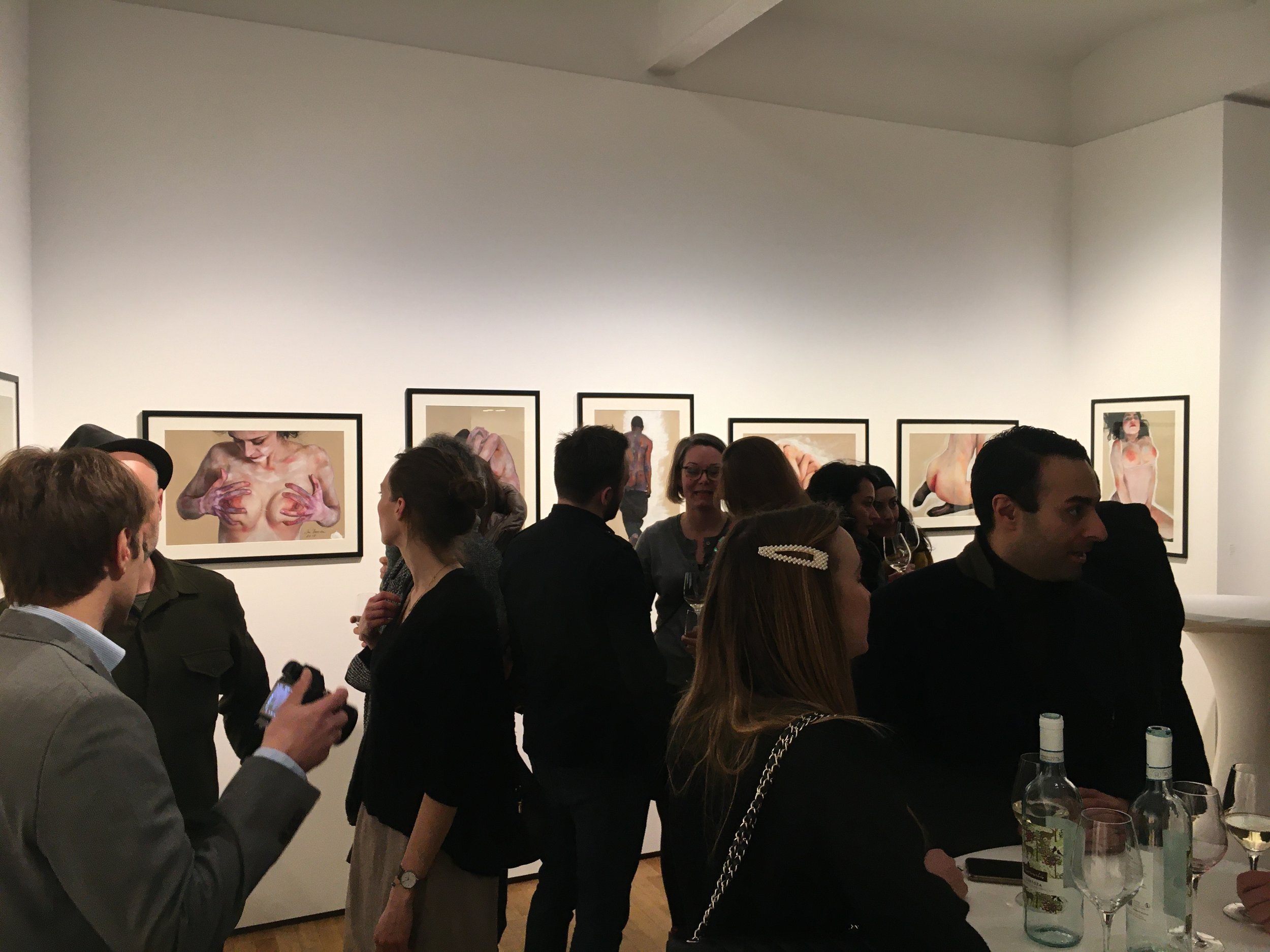
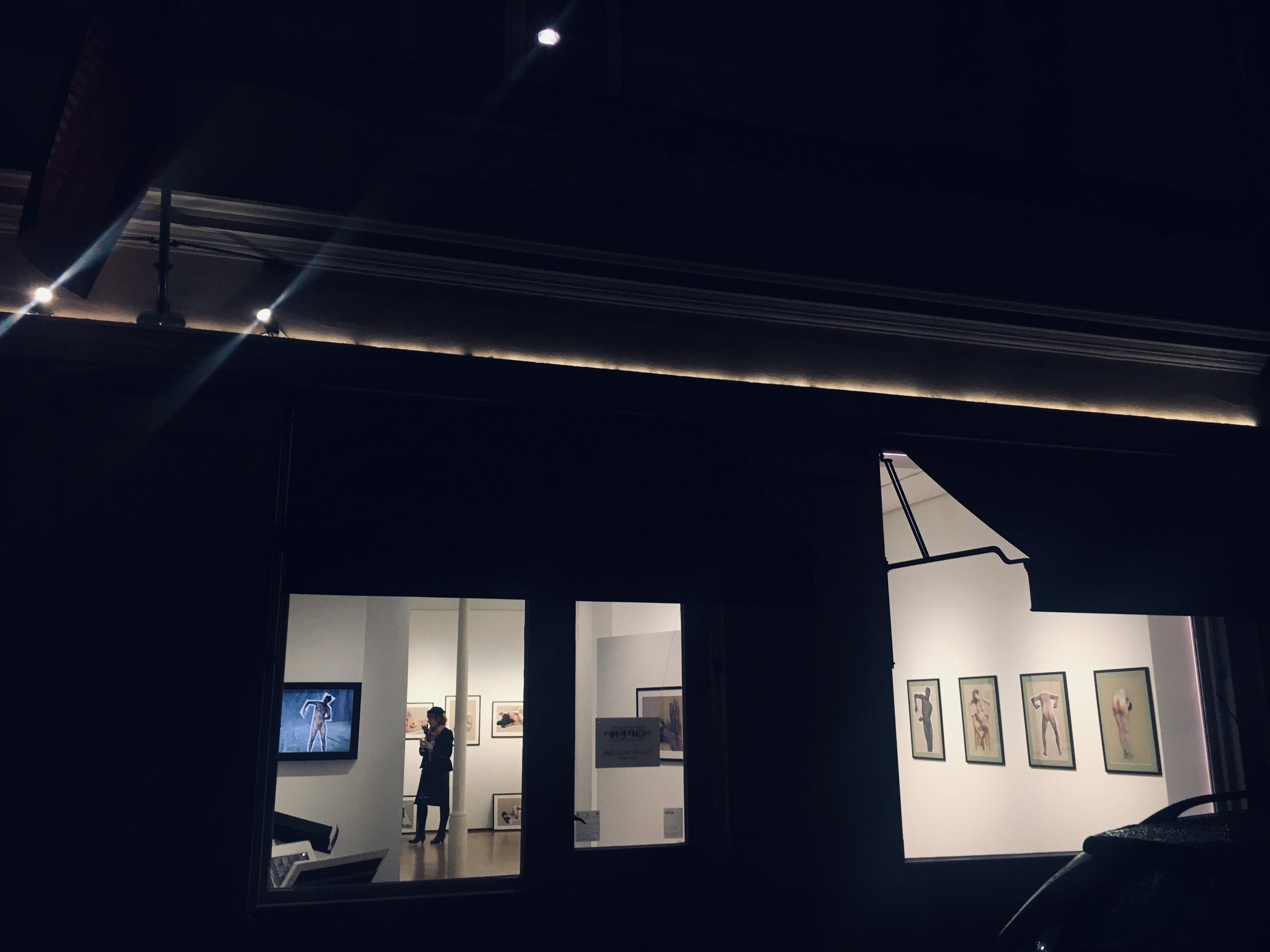

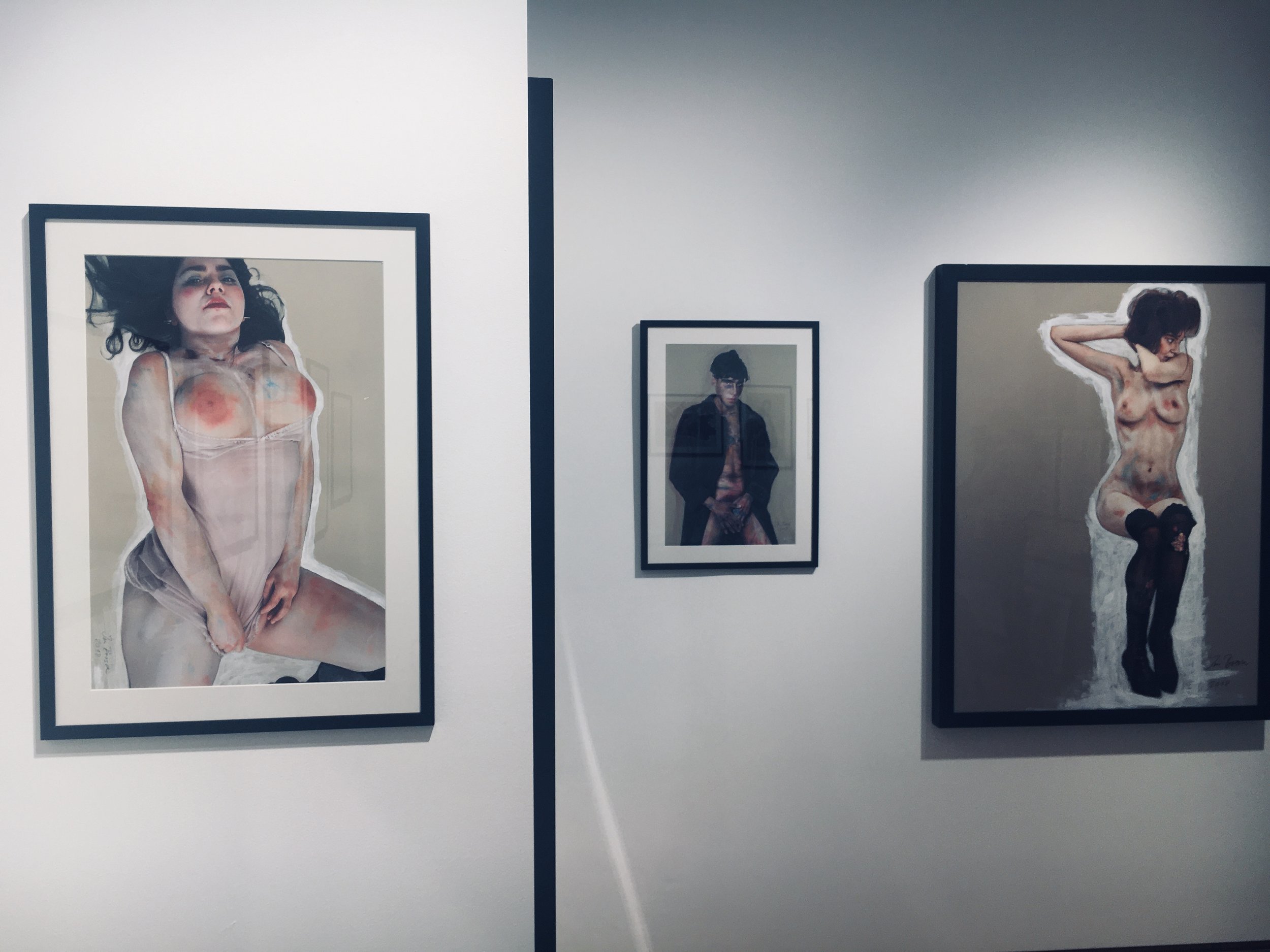
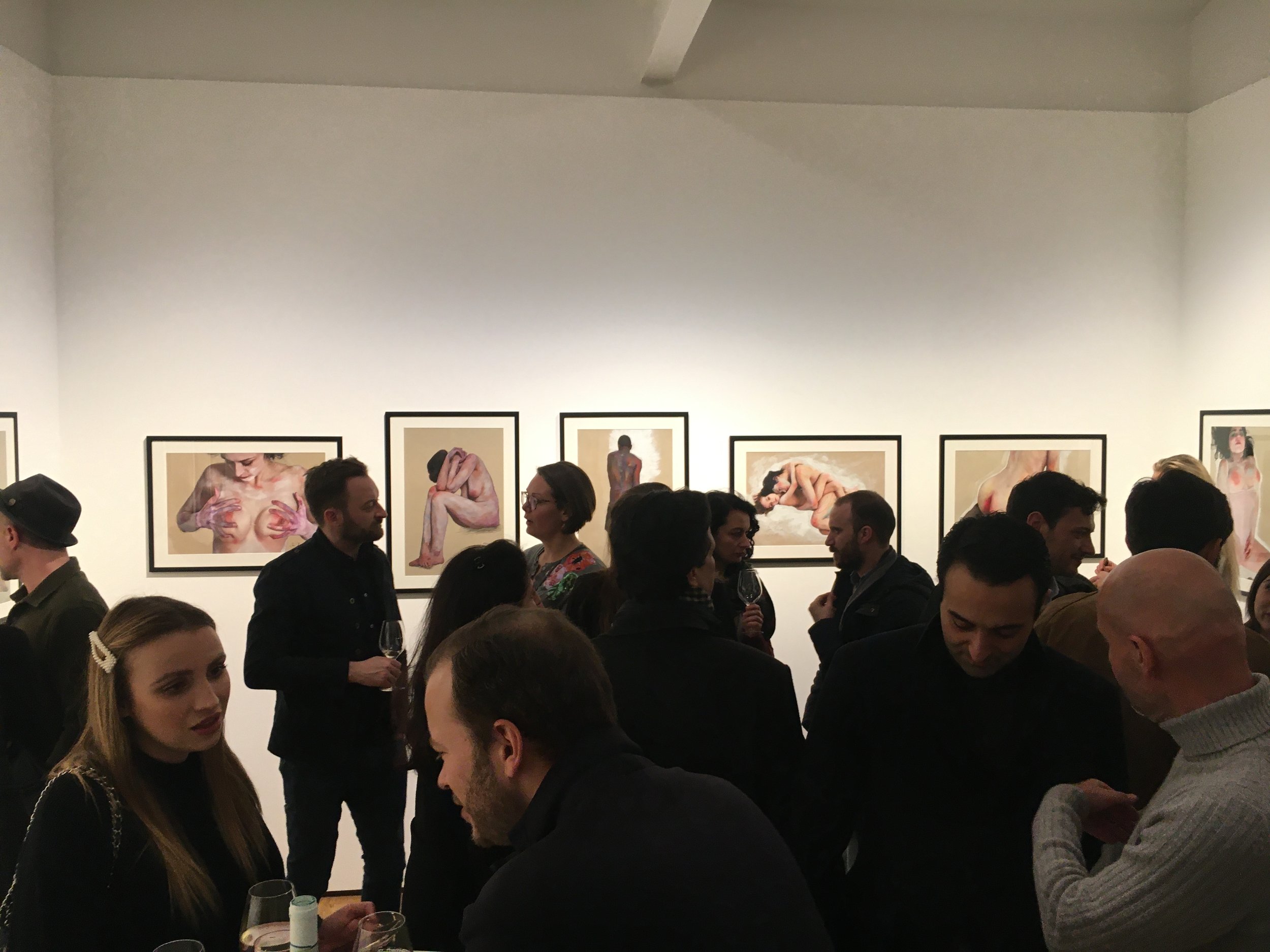
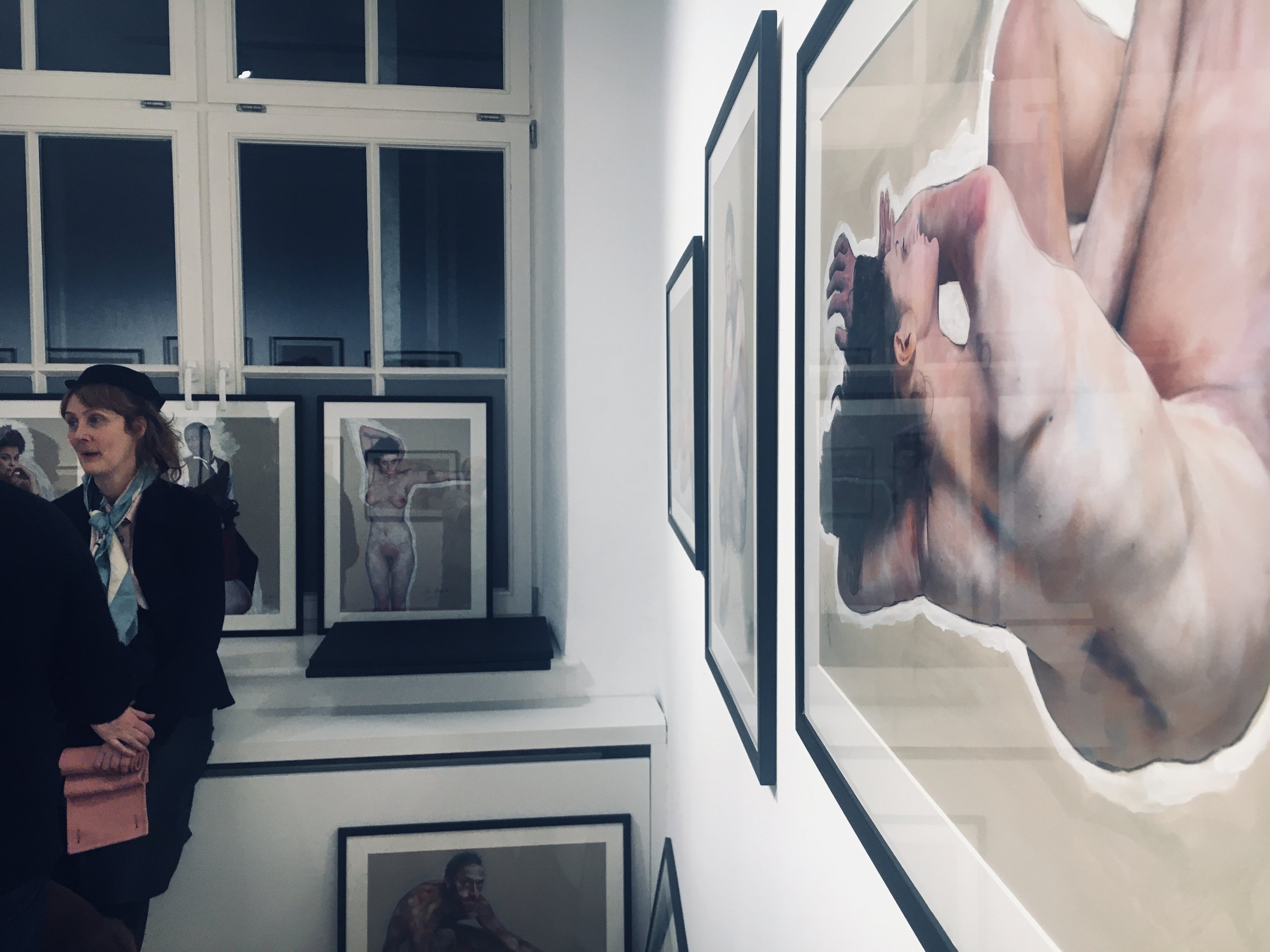

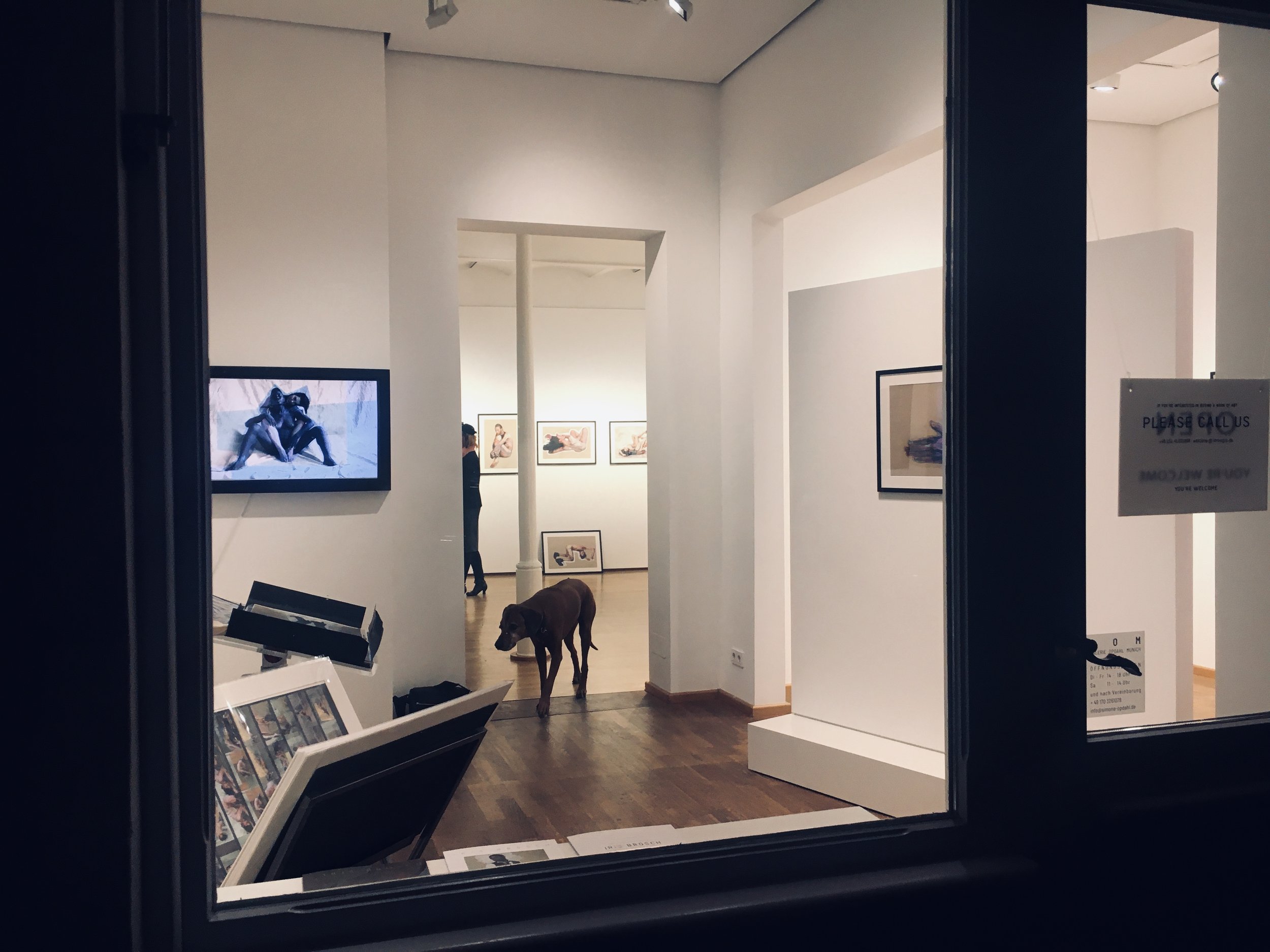

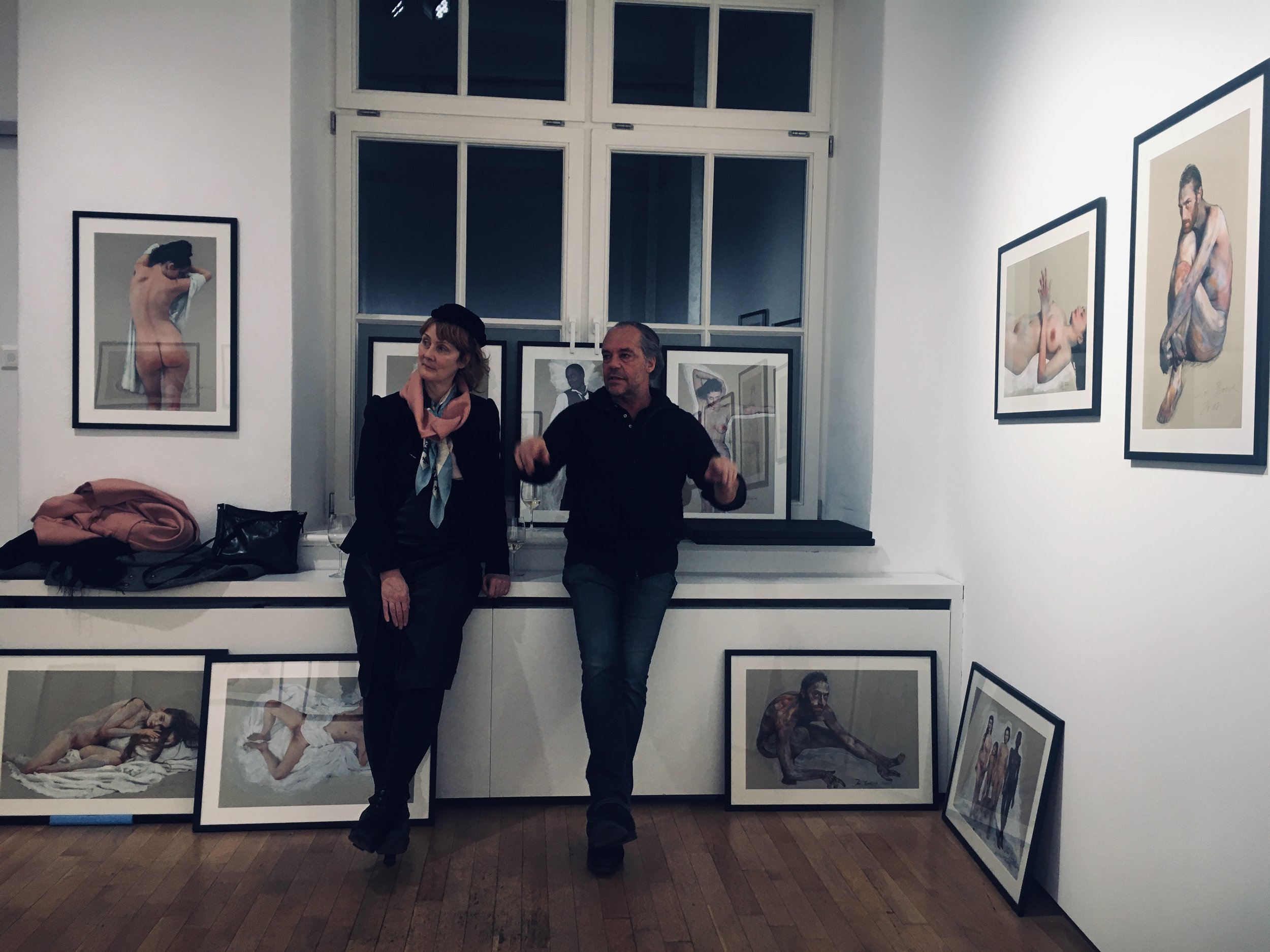
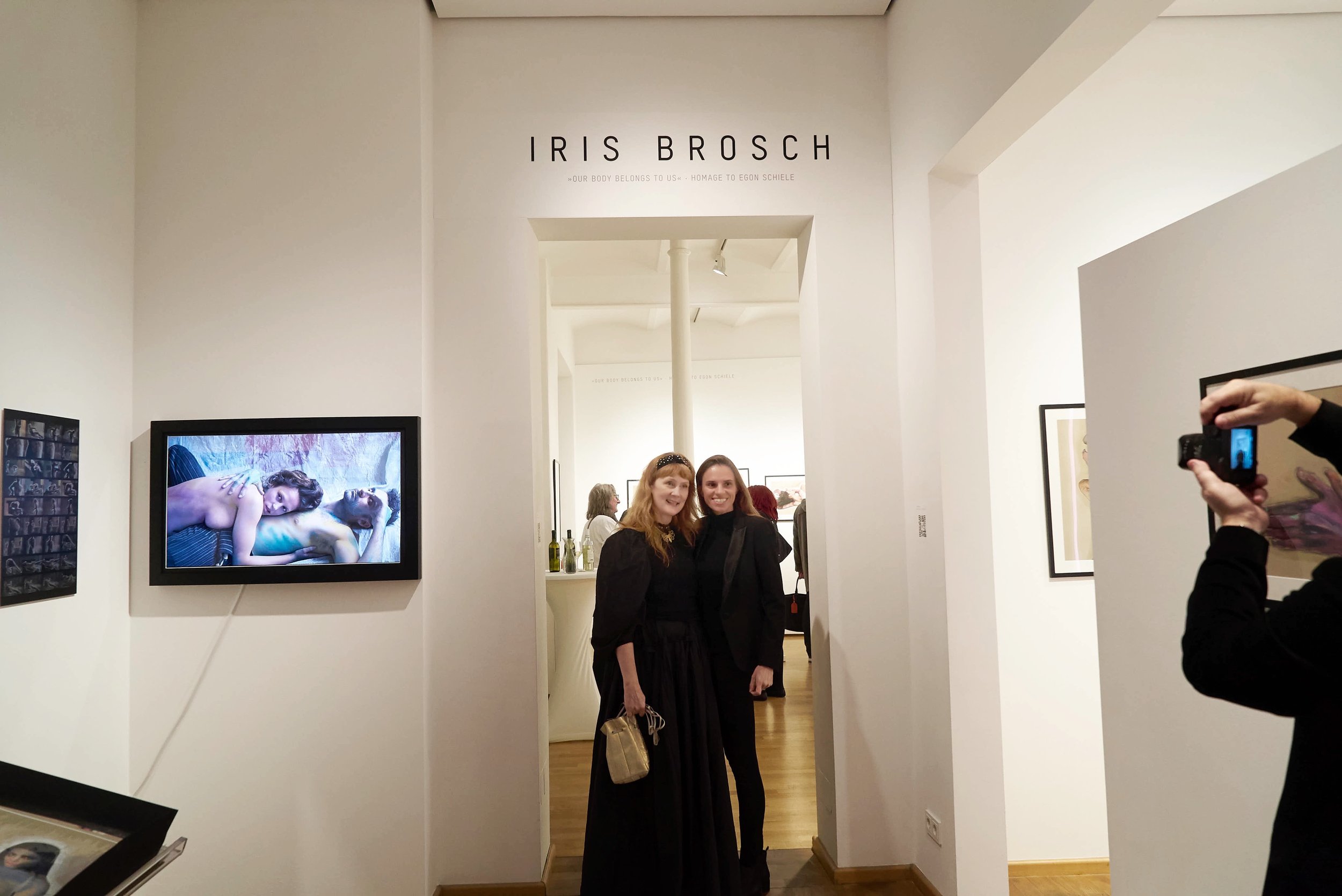

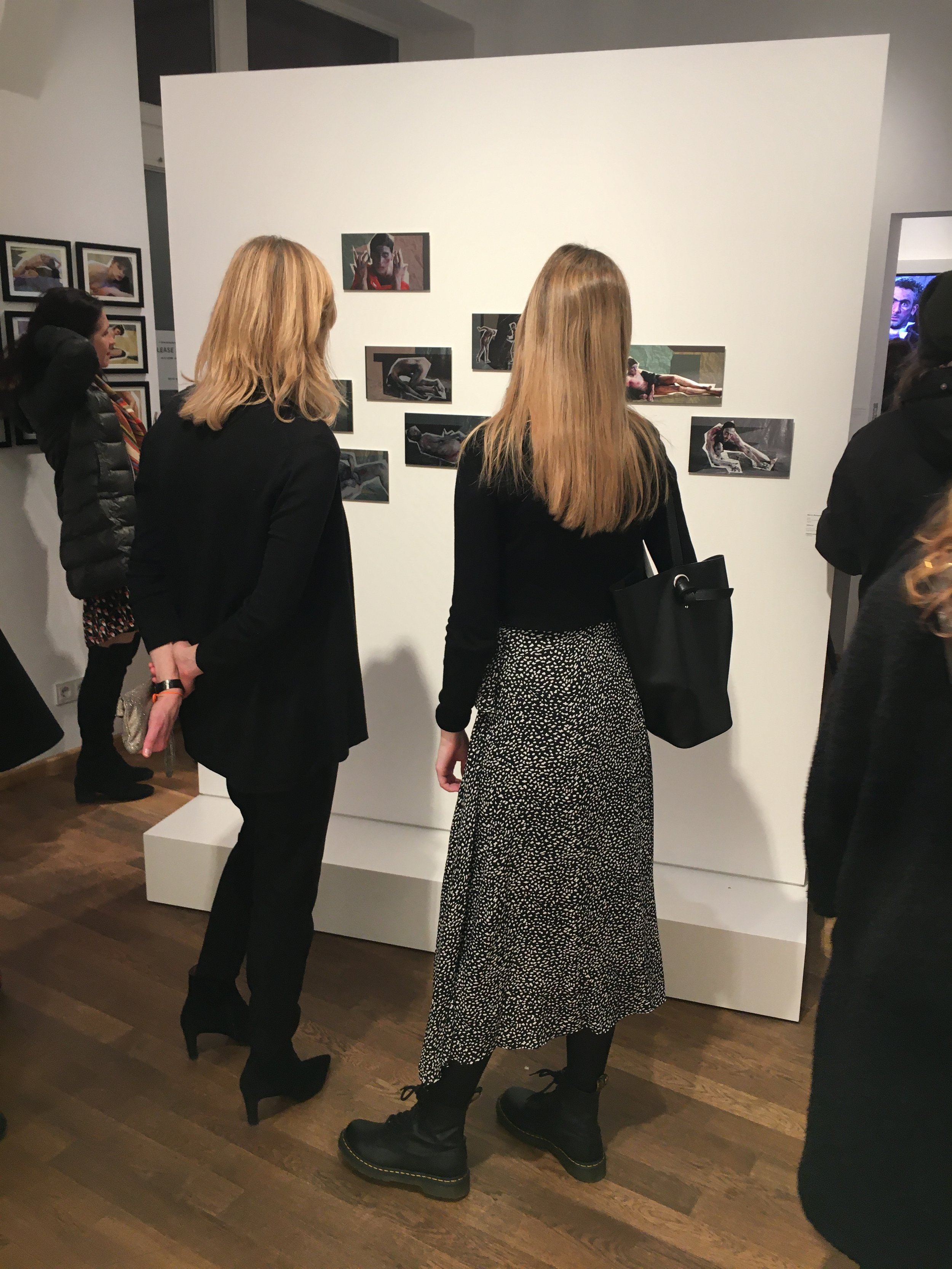
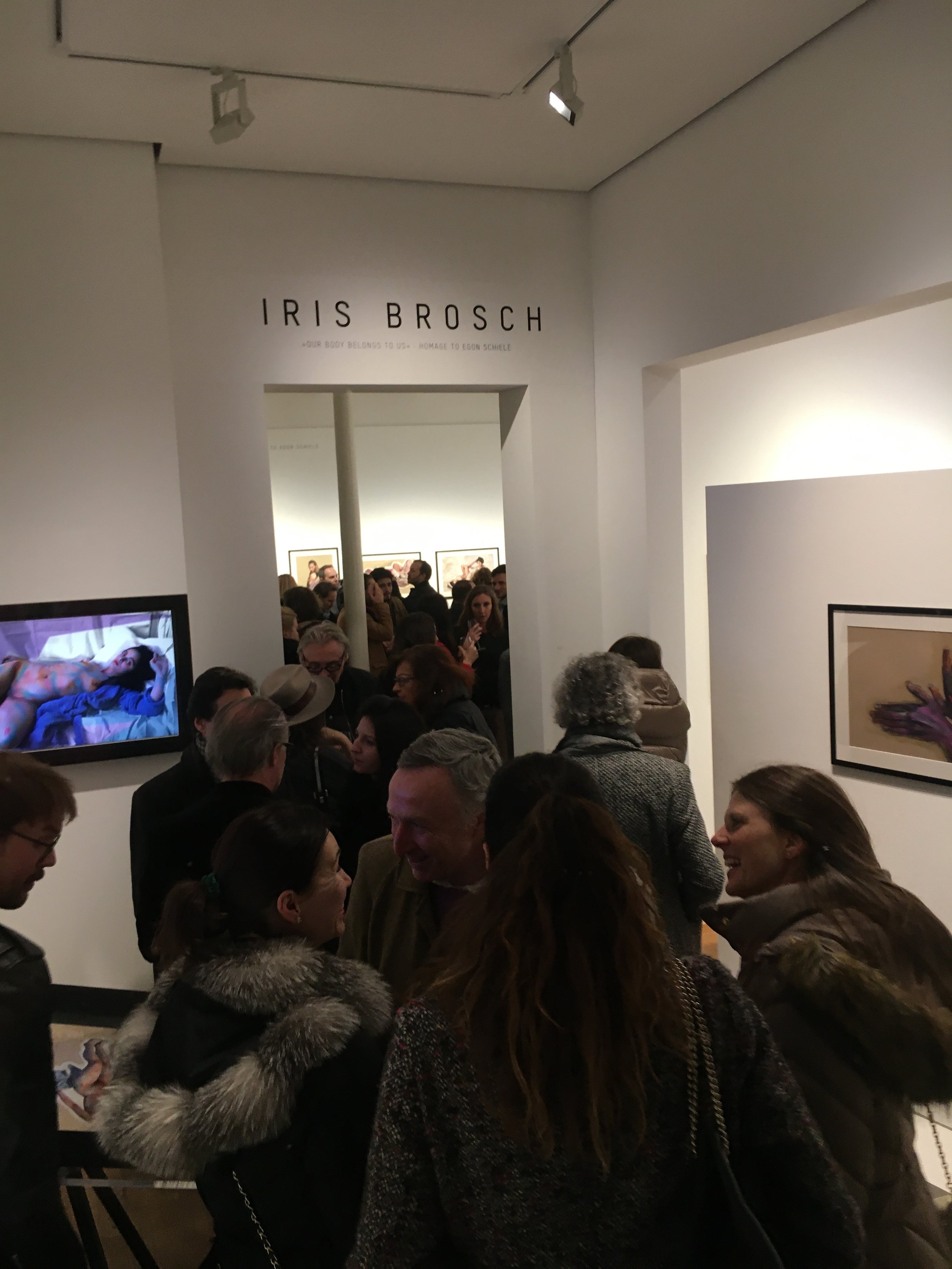
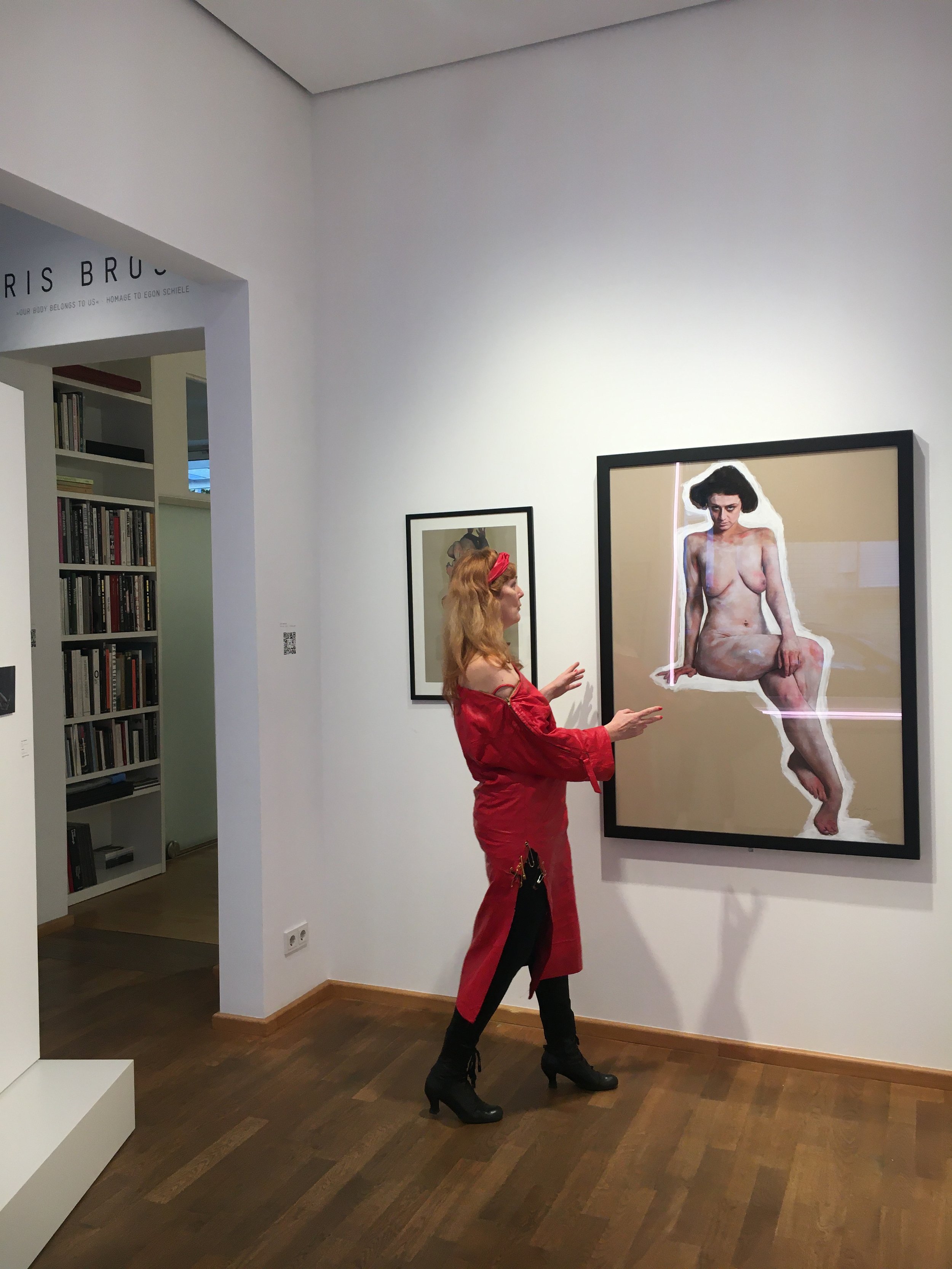
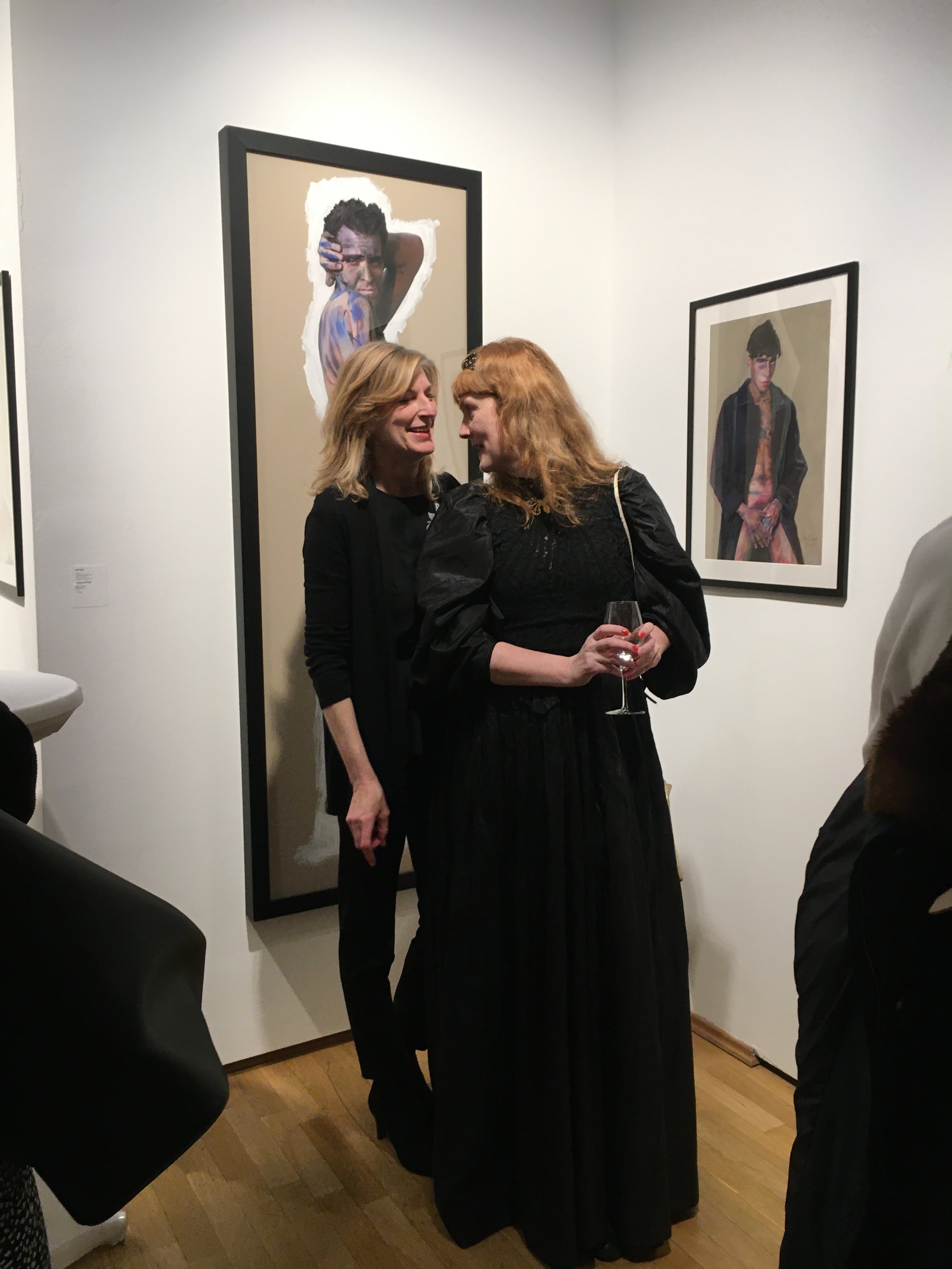

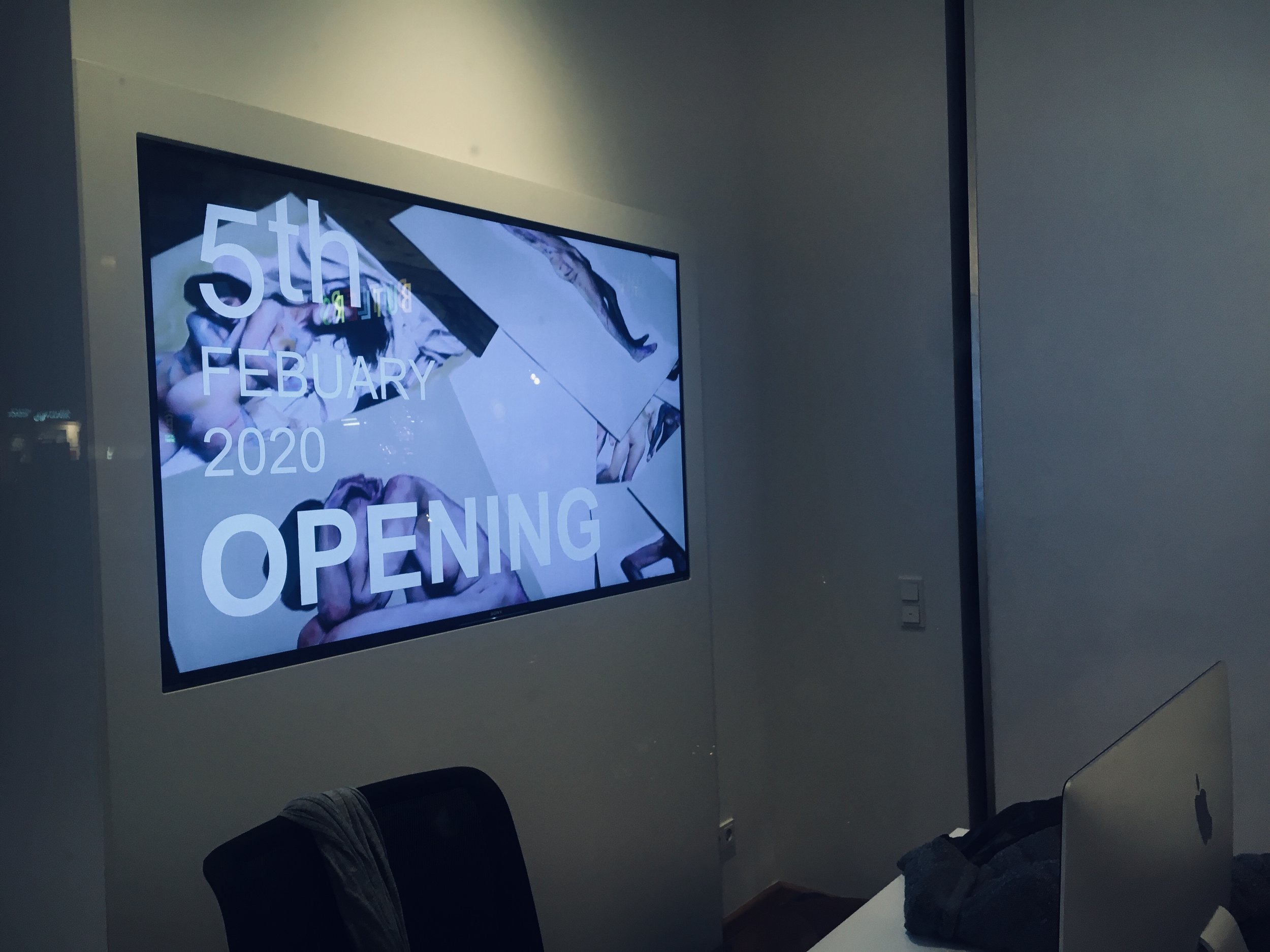

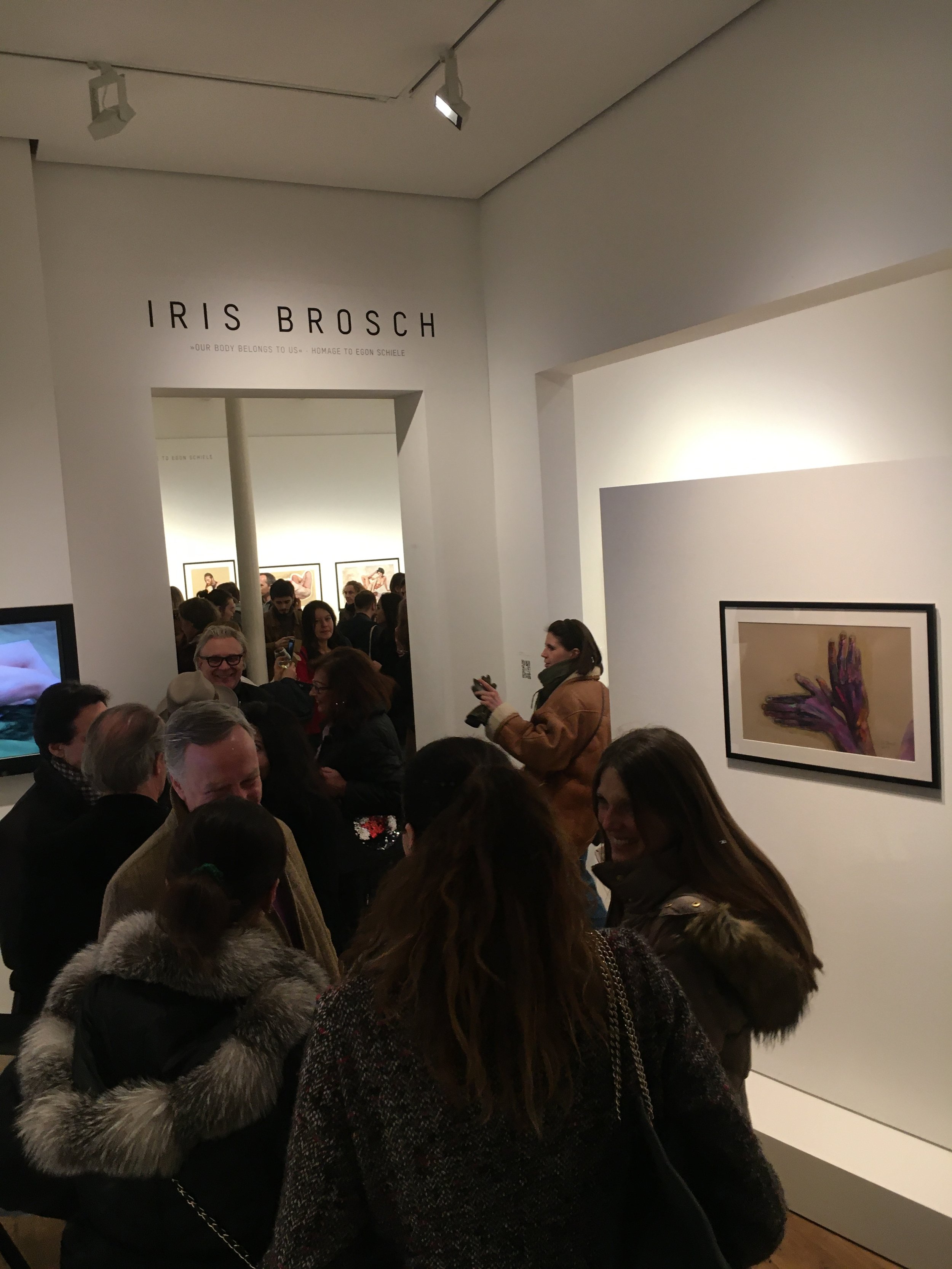

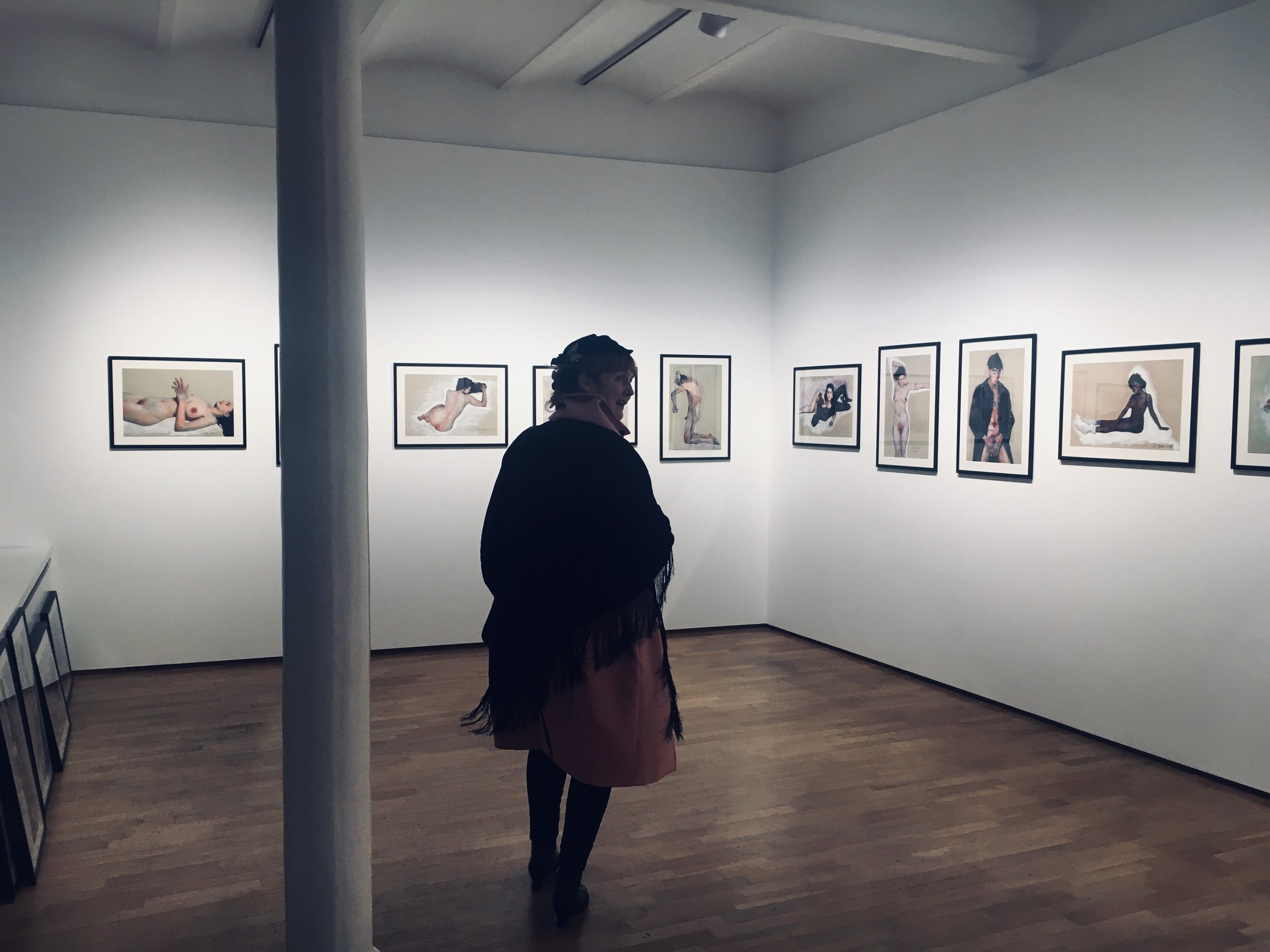


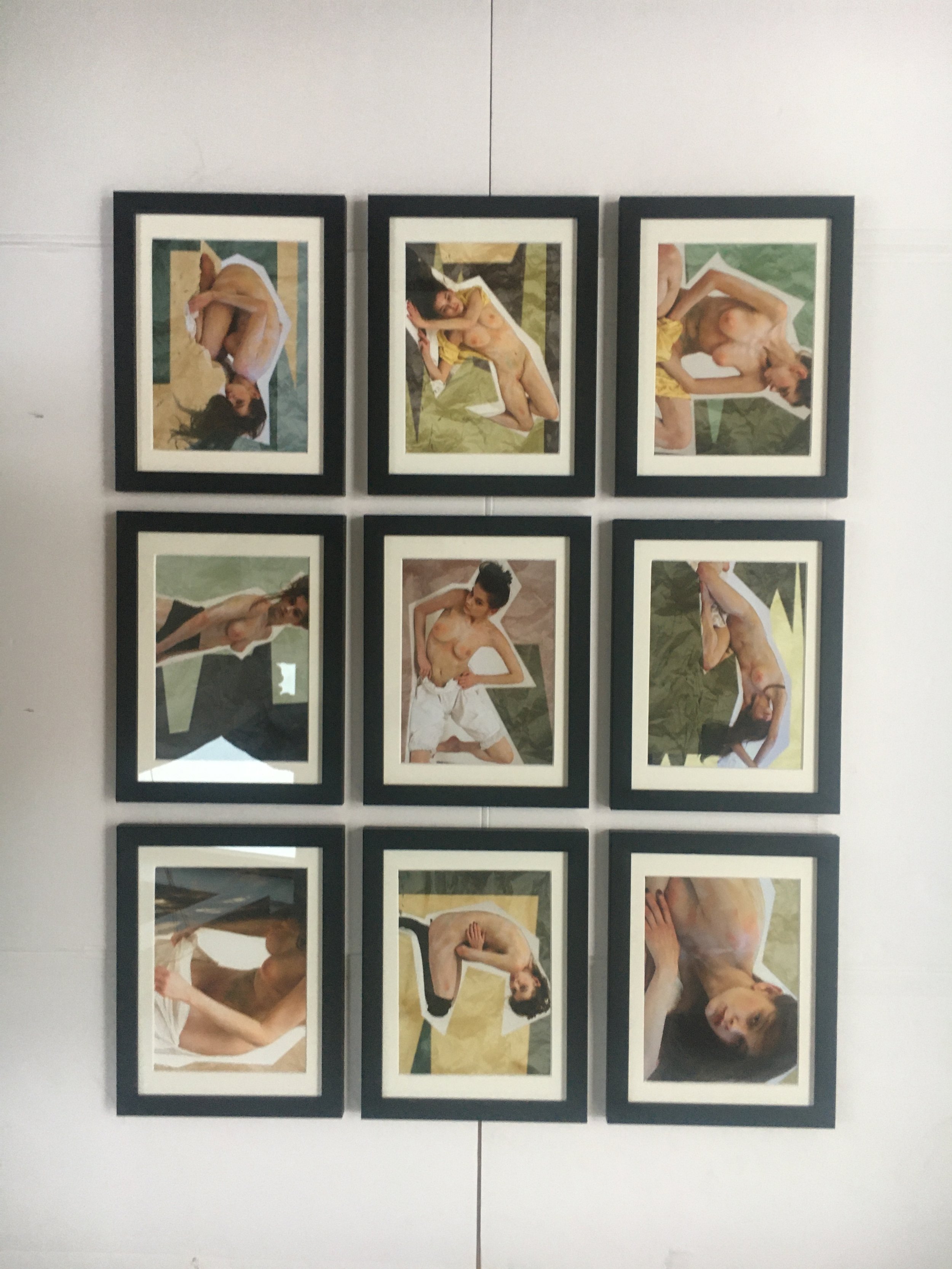
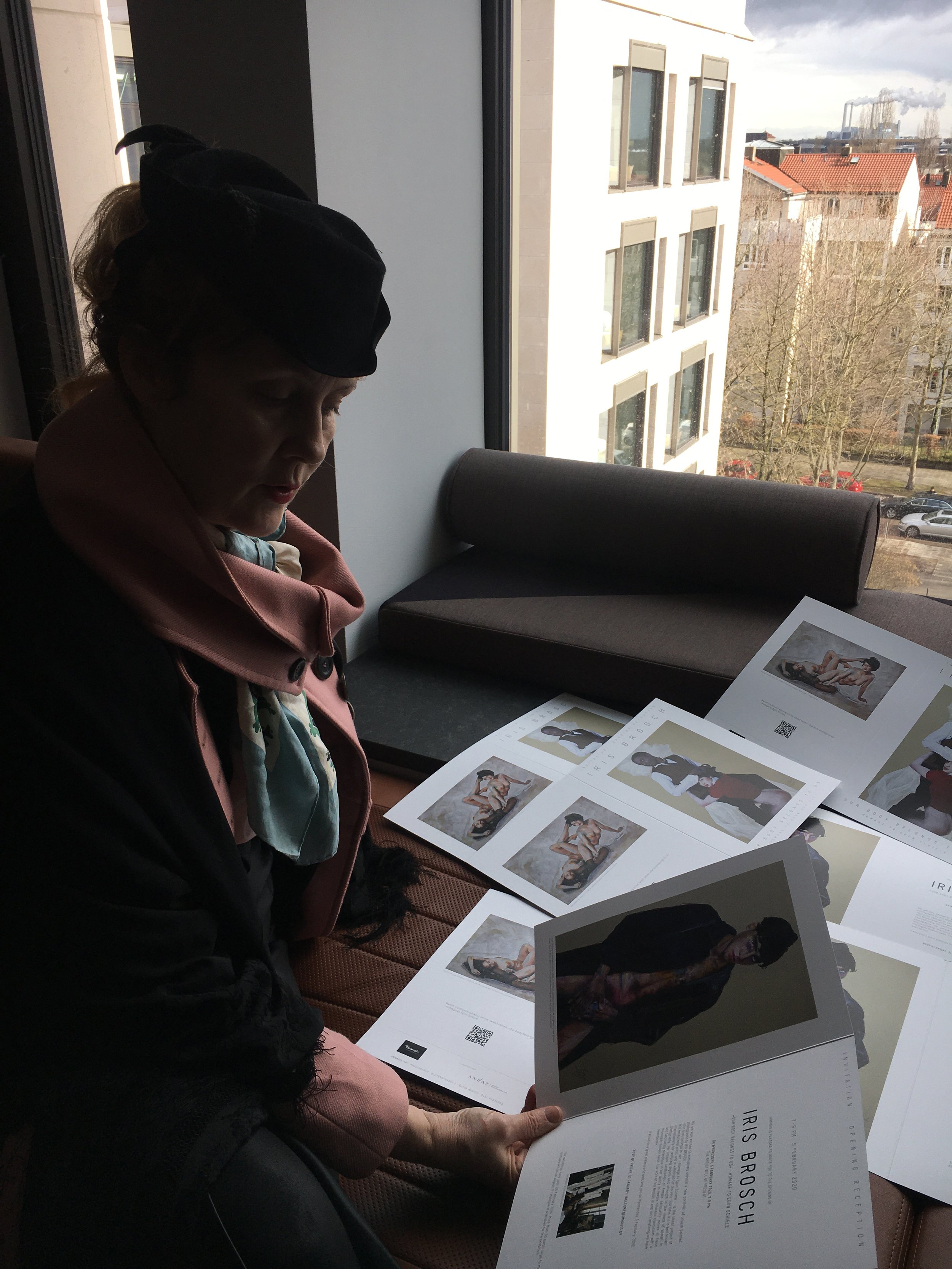
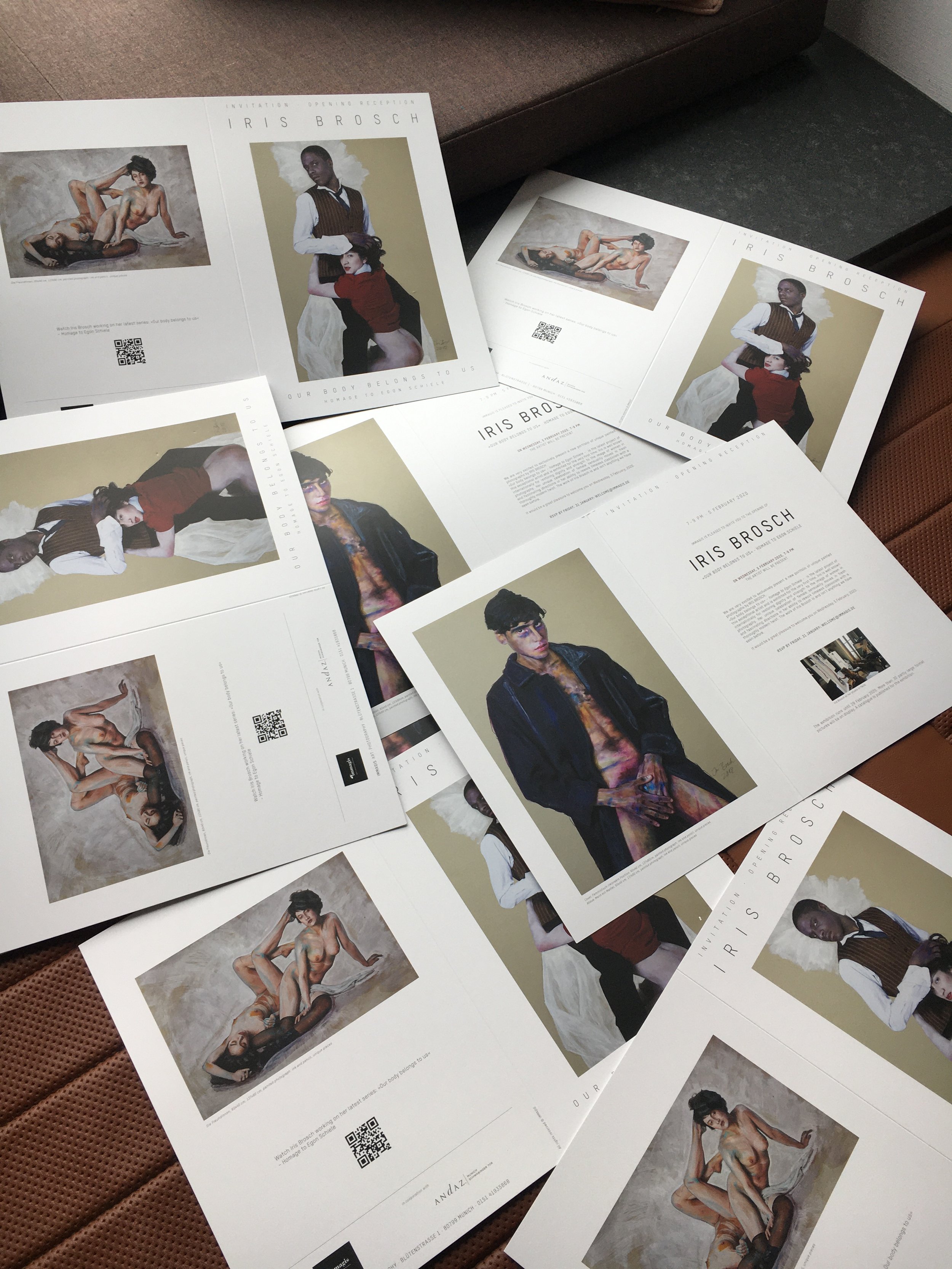

Atelier of Iris Brosch , Installation and Opening , februar 2020 ,Immagis Art Gallery , Munich /GERMANY

